Ronald.phillips
Shared posts
Better Call Saul Season 6 Delivers Its Most Devastating Episode Yet With 'Plan And Execution'
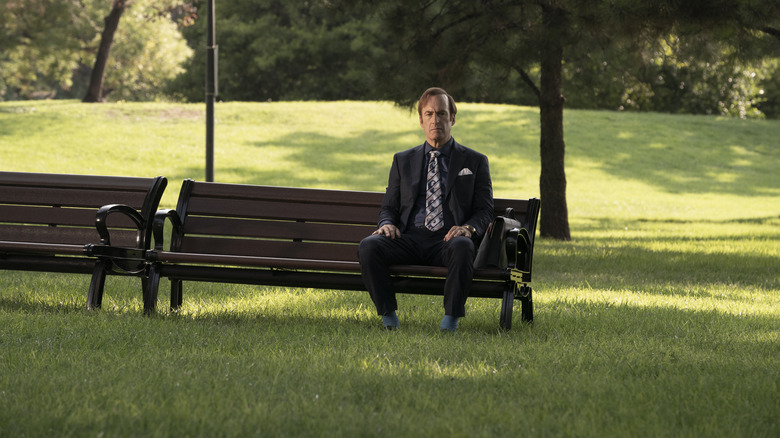
I should've seen this coming. I know I should have. Maybe I even did. And yet, tonight's mid-series finale of "Better Call Saul" still concluded in a way that left me reeling. Even though I had a suspicion something like this — something terrible and irreversible — was on the way, I still don't think I was quite prepared for, well, this. Now give me a moment to catch my breath.
While Jimmy McGill, aka Saul Goodman, was always doomed to a life of crime, there always remained a tiny glimmer of hope buried in "Better Call Saul" that there was some way of turning back the clock; of setting things right. Indeed, we want Jimmy to be redeemed. We want him to be more like the likable guy we met at the start of "Better Call Saul," not the sleazy, crooked lawyer we met in "Breaking Bad."
When we watch the black and white flashforwards of Jimmy as Gene, the sad, lonely Cinnabon manager, we feel bad. But now, after this latest episode, "Plan and Execution," the question must be raised: does Jimmy even deserve to be redeemed? Maybe not. Maybe he deserves every terrible thing that might happen to him. And sadly, the same must now be said for Kim Wexler, once the guiding light of the series. The actions Jimmy and Kim set in motion this season have reached a cataclysmic conclusion — and there are still six more episodes in the series to go. Who knows what horrors await?
Lalo's Back In Town
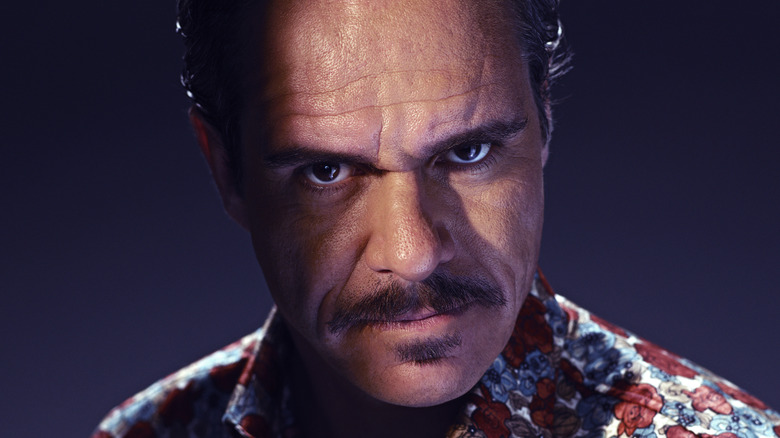
Before we get to the meat of the episode, let's delve into what's going on in the dangerous world of the cartels. Lalo has returned from Germany, and he's determined to bring Gus down. He sets up shop in the sewer directly in front of the industrial laundry that acts as a front for Gus' meth superlab. Like Pennywise the Clown, Lalo peers out of a storm drain, gathering intel. He wants to make a move. And then he gets a rude awakening. While calling his uncle Hector in the nursing home to tell him about his latest plans, Lalo notices some distinct clicking sounds on the phone line. The show doesn't come right out and say what they are, but Lalo has a pretty good idea: the sounds are the result of the phone lines being tapped. Now, Lalo knows that Gus knows that Lalo is still alive. And that means Lalo has to change his plans. More on that later. Sort of.
As for Gus, he's informed by Mike that Lalo is back. Mike wants to set a trap: Gus will go back to his safe house and appear to be alone, which will hopefully invite Lalo to attack. If he does, Mike and his guys will get the drop on Lalo. Sounds simple, right? Sure. But Lalo has some other plans.
Howard's Bad Day
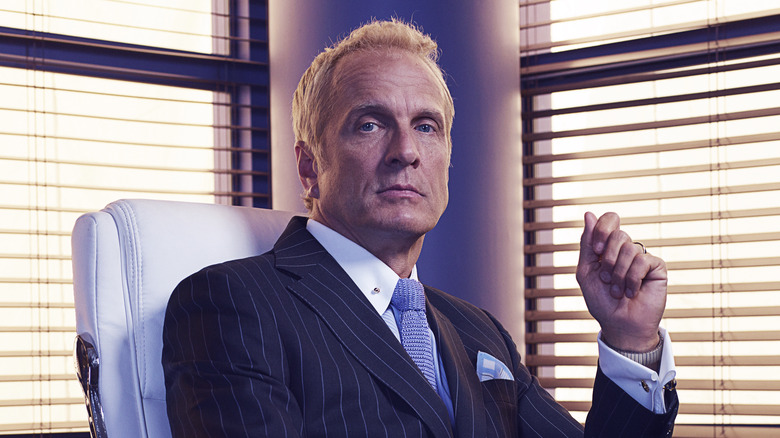
I'll confess I was dying to know just what Kim and Jimmy's plan to get Howard involved, and how it was going to shake out. I also kept hoping against hope that whatever it was, it would go wrong. It would backfire. And everyone would get away unscathed for now. No such luck. I guess the days of characters getting away unscathed on this show are long gone.
Here's how it all works out: Jimmy and Kim stage a series of photos that make it look like the judge acting as a mediator in the Sandpiper case is seen taking a pay-off from Jimmy. The pictures had already been taken when, in last week's episode, Jimmy just happened to run into the real judge and see that he was sporting a cast on his arm. Thinking quick, Jimmy and Kim go about a reshoot. They get their judge actor back as well as their go-to camera crew. Once again, the imposter judge — now sporting a cast — is photographed taking a large envelope from Jimmy. Off-camera, Kim serves as the director of the scene.
Afterward, Jimmy and Kim coat the photographs with the mystery drug they picked up from the crooked veterinarian in the previous episode. And then a missing piece of the puzzle is revealed: the private eye who has been working for Howard to spy on Jimmy is a double agent. Yep, that's right — he's been working for Jimmy and Kim the entire time. He takes the photos to Howard right before Howard is about to go into the mediation meeting. Drugged by the residue on the pictures, Howard immediately begins to get overheated while his pupils dilate. In other words, he looks high.
Things go from bad to worse when the real judge enters. He seems like a really pleasant fellow, but Howard immediately recognizes him (or thinks he does) from the photos. And rather than keep his suspicions himself, Howard instantly begins hurling accusations. Trying to prove his case, he has his assistant grab the private eye photos from his desk. But at some point, they were switched, and instead of showing Jimmy handing a bag to the judge, they instead have Jimmy handing a frisbee back to some random guy. It's hilarious for us, but to Howard, it's understandably maddening.
As a result of all of this, the case collapses. Cliff insists they take a lower offer on the Sandpiper case and settle, and while Howard tries to resist, he ultimately has no choice. This entire scene is both unbearably intense and laugh-out-loud funny. I felt so incredibly bad for Howard, but I couldn't help but guffaw at how the entire plan came together in the end. Jimmy and Kim call into the mediation and hear the entire thing, and it goes off so well that the two of them are inspired to immediately start smooching. They get off on this.
Howard, meanwhile, feels like he's ruined. But if you thought things couldn't get much worse for Howard, think again.
Kim Watch! How Worried Should We Be About Kim Wexler This Week?
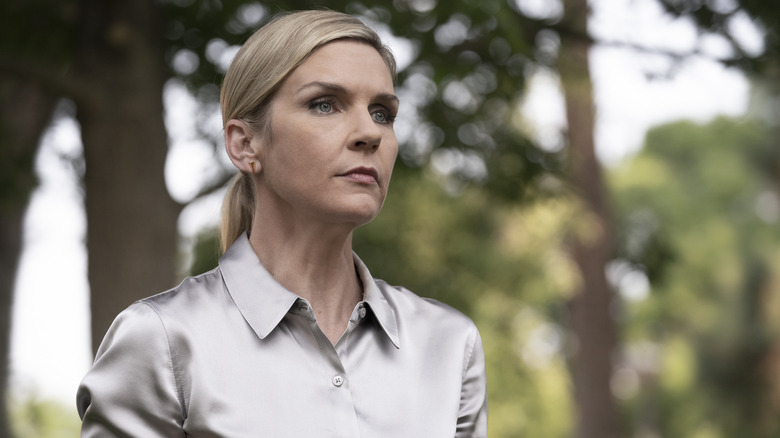
LEVEL OF WORRY: I AM SCREAMING
Later that night, Kim and Jimmy are celebrating their success by cuddling up with an old movie. And then there's a knock on the door. My stomach sank, and I so badly wanted them to ignore that knock. There's even a moment when Jimmy suggests they do just that, but no — in the end, he gets up and gets the door. And you probably guessed who it would be on the other side: Howard.
Howard wants to know why Kim and Jimmy targeted him. He says he knows he can be an a-hole, but does that give them the right to perform such an elaborate scheme against him? He goes so far as to accuse Jimmy and Kim of being sociopaths. Jimmy seems offended by this, but Kim remains disturbingly silent. What can we read in that silence? As Howard begs and pleads for answers, Jimmy kind of tries to calm Howard down and tell him he'll land on his feet again. But Kim only looks on. Is she just playing it cool? Does she not know what to say? Or does she recognize some truth in Howard's words? Is she suspecting she might be a sociopath? Probably not, and I don't think Kim is a sociopath, either. But I do think neither she nor Jimmy put much thought into how devastating their little plan could be.
No matter. Things get even worse, because soon Kim and Jimmy have another visitor: Lalo. Jimmy, who still thought Lalo was dead, is flabbergasted. Kim, for her part, finally starts speaking up. She begs Howard to get out; to leave immediately. Howard is understandably puzzled. Lalo, being Lalo, simply stands there like a creep — and then produces a gun with a silencer. Howard, being Howard, tries to be the voice of polite reason.
And then he's killed.
Lalo shoots Howard a point-blank range, and even though there have been more than a few murders on this show (hell, Nacho, another main character, was shot to death at the beginning of this season), something about Howard's death is particularly horrifying. Probably because for all his flaws, Howard was an outsider. A bystander. Nacho was a likable guy, but he was still a criminal running in a world of criminals. Howard was just a nerdy high-priced lawyer going through a divorce. He had no part of the world of drug runners and murderers. And yet, because of his association with Jimmy, that world still destroyed him in the end.
Kim and Jimmy are suitably shocked and terrified by Howard's murder — more proof they're not sociopaths. As for Lalo? Well, he wants to talk. But that'll have to wait until July, when the show returns for its final six episodes. And while that's frustrating, there's still plenty to take away here. Specifically, if it wasn't clear before, it's painfully clear now there's no turning back for Kim. She just witnessed a murder, and she's in serious danger herself. Are her days numbered?
Sidebar
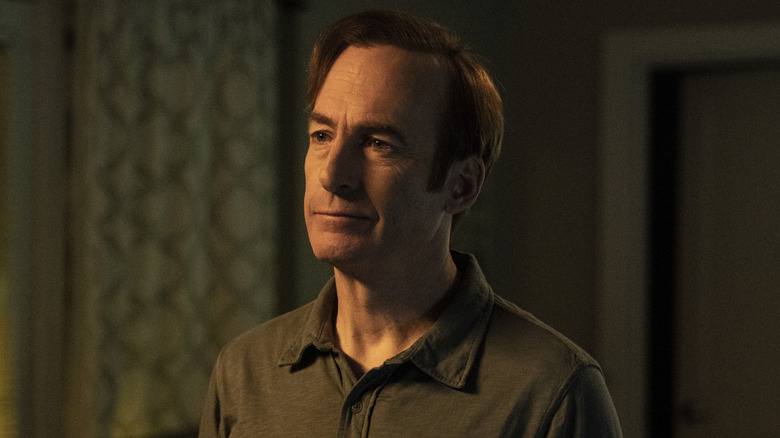
- I really, honest to gosh thought Howard would make it out of this show alive. Sorry, Howard.
- A round of applause for Patrick Fabian. Howard wasn't always the flashiest role, and there were long stretches where it felt like the show didn't quite know what to do with the character. But Fabian always delivered, and he does what might be his best work on the entire show in this episode, going from calm and confident, to frantic and angry, to sad and hurt, and then to, well, dead. He will be missed.
- "Think of the broken arm as symbolic," Jimmy trying to explain the cast to the actor playing the judge.
- "The secret to a really good potato and leek soup isn't the potatoes; it's the leeks." So says Irene, the Sandpiper client.
- So what is Lalo's plan now? I'm guessing it involves using Jimmy/Saul to get close to Gus in some way. We also know that Lalo is unlikely to succeed, since he was never seen and only got a casual mention in "Breaking Bad," while Gus was operating and thriving. But that doesn't mean Lalo won't cause a lot of trouble (and kill more people) before things wrap up.
- A moment of levity: the make-up girl is seen in costume and reveals that she's starring in a live-action musical tribute to "The Dark Crystal." Because of course she is.
Read this next: Every Ridley Scott Movie Ranked From Worst To Best
The post Better Call Saul Season 6 Delivers Its Most Devastating Episode Yet With 'Plan and Execution' appeared first on /Film.
Apple In Talks To Buy EA Gaming; Disney and Amazon Also Potential Suitors
Read more of this story at Slashdot.
Microsoft's Windows Subsystem For Android Just Got a Big Update
Read more of this story at Slashdot.
Josh Sawyer on the Road to Better Armor Systems
Linux 5.18 Release Could Be Bad News for Overclockers
The Linux kernel developers have announced version 5.18 of the stable Linux kernel, with a feature that could affect future Intel processors by limiting CPUs unless users pay for upgrades to unlock features that already exist on the silicon.
Visual Studio 2022 for Mac launches with a new UI, .NET 6 support, and more
Microsoft has officially released Visual Studio 2022 for Mac (version 17.0), roughly ten months after the first private preview was launched. The new version of Visual Studio comes with a brand-new UI based on the native macOS design, replacing the old design that was using a mix of UI technologies. Additionally, the IDE now runs on top of .NET 6, which means it now runs natively on Apple Silicon Macs, promising a performance uplift of up to 20% compared to Visual Studio 2019.
While it feels more native to Mac, this release will also feel more familiar to Visual Studio users coming from Windows. Terminology has been updated to match the Windows version of Visual Studio, plus there are new features like the Git Changes window and a new drag-and-drop experience for tool windows so you can move tools around more easily.

Visual Studio 2022 for Mac also adds support for .NET 6 app development, as well as C# 10 and Azure Functions v4. Other changes include improved support for multi-caret copy-and-pasting, improvements to search filtering and grouping, and more. Many of these improvements were also in Visual Studio 2022 for Windows. Of course, tons of issues and smaller improvements are also in tow, you can find them all in the official release notes from Microsoft.
One thing that’s missing from this release is support for .NET MAUI, the capability that makes it easier to write a single codebase for apps that look modern on both mobile and desktop devices. However, that’s part of the first preview for Visual Studio 2022 for Mac 17.3, which is also available today. Preview 1 comes with initial support for .NET MAUI tooling, and it will also support .NET 7 for the first time. This update also includes further work on the transition to the new native UI for macOS.
If you’re interested in the latest stable release of Visual Studio 2022 for Mac, you can download it here. Those willing to work with potentially unstable software can download Visual Studio 2022 v17.3 Preview 1 instead.
Source: Microsoft
The post Visual Studio 2022 for Mac launches with a new UI, .NET 6 support, and more appeared first on XDA.
Windows 11 CPU Usage Reporting is Apparently Buggy, Including on Task Manager
Read more of this story at Slashdot.
Torn Hearts Director Brea Grant On Making A Colorful Country Music Horror Movie [Interview]
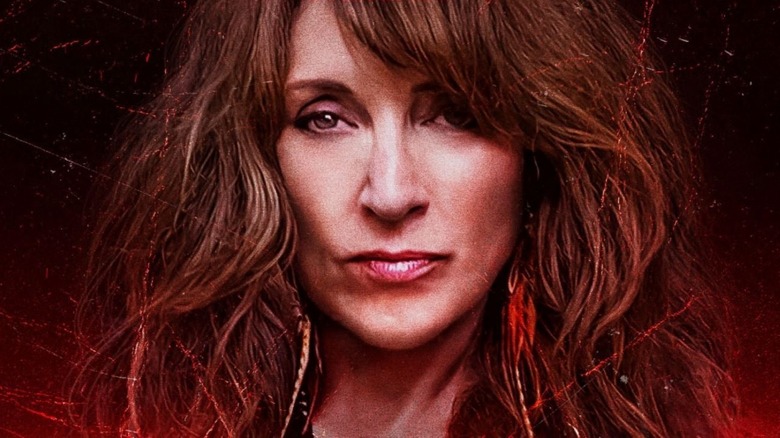
Never meet your heroes, they say ... "Torn Hearts" is about two rising artists in the country music world, Jordan Wilder (Abby Quinn) and Leigh Blackhouse (Alexxis Lemire), meeting the woman who inspired them, the legendary Harper Dutch (Katey Sagal). They drink, they sing, and they even live together. The dream does not match the reality, though, which is one of the themes director Brea Grant explores in her aesthetically poppy but thematically dark horror film.
"Torn Hearts" is the director's third feature to date following "12-Hour Shift" and "Best Friends Forever." With her well-received Blumhouse picture, which Rachel Koller Croft wrote, Grant puts together a rare mix on-screen of country music and horror. "I think it was a big swing," Grant said. "Most of those people were probably not country music fans, so I was very concerned about how the horror community would react to a country music thing. I feel like a metal band, or like a punk band, those go hand in hand more with horror than country music, but hopefully, I changed that a little bit."
To coincide with its release, Grant told us about creating the world of "Torn Hearts," from the music to the film's main setting, and about her journey as a filmmaker.
'Lean Into The Weirdness Of It'
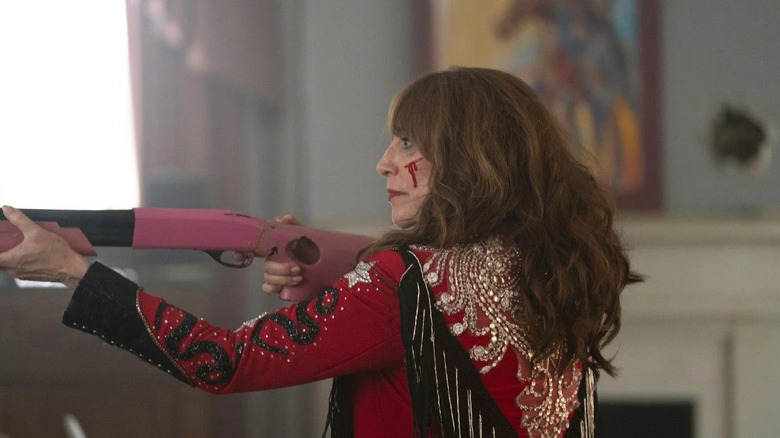
This is a very colorful horror movie. How'd you land on that choice?
The script that Rachel wrote had a pink gun in it, which I was like, "Never seen that before, that's interesting." When I signed on to do the movie, I basically made this whole packet full of aesthetics and wanted to lean far more into the pop, the pink, the femininity of it, because it's three women on screen. It could be a dark house, it could be a creepy house, but I thought there'd be something fun and whimsical about it on top of all of the psychological horror that's happening. I made this big packet that was like, "Pink guns, put pink in every frame, lean into the weirdness of it."The aesthetic is like maximalist feminine. Feminine maximalism, how about that?
[Laughs] I also think it works just with the themes of the story. It almost feels like a doll's house.
I love that. Well, we talked a bit about things like "Grey Gardens" or "Sunset Boulevard," houses that had this almost borderline hoarder aesthetic, but also, what she would actually have in her house. If she had this giant house in the middle of nowhere and no one has been there, what would it look like? She came from this '80s, '90s world of fringe and bright colors and sparkles, so why would the house not reflect that?
I mean, it's a weird movie because most of it is daytime, which is not typical for a horror movie. There are very few daytime horror movies. I think that night is scarier, but there's nothing scarier than a crazy woman with a pink gun.
Also strangely enjoyable, at least when Katey Sagal is holding that shotgun.
Isn't she so great? I don't read reviews, but I was sent a couple and I love how much people are talking about her. She's very excited about how much people are responding to the character. She came in and brought that character to life in a way that I didn't know how it would go without an actress of that caliber. When you get someone like Katey Sagal, she just comes in and is very cool with doing anything, chewing it up and making a big meal out of it.
'There's All Sorts Of Weird Little Easter Eggs'
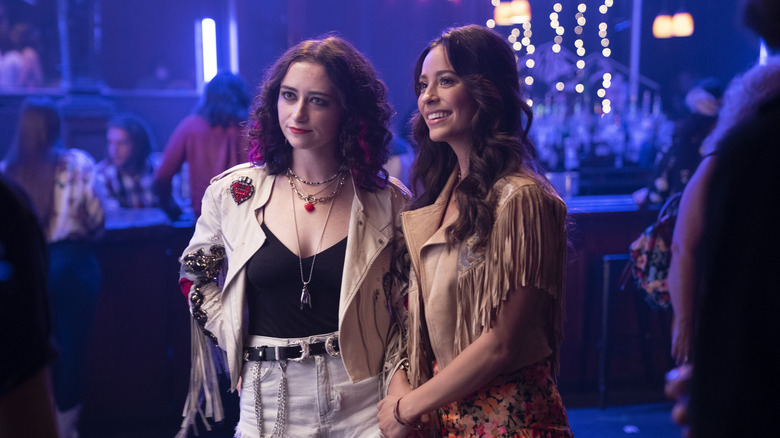
How did the finger tapping come about?
That was Katey! This is what happens when you hire actresses who know what the f*** they're doing. She and I had a call after I sent her an email begging her to be in the movie, and she wanted to talk about the character and why the character was doing what she was doing. We talked more the closer we got to shooting, and she had a lot of questions, a lot of thoughts about, "How is she getting her food, because she doesn't leave her house? What would she be into?" There's all sorts of weird little Easter eggs around the house that are things that Katey and I talked about.
But then Katey also was like, "I think I would have some sort of nervous tic," and she just started doing it. I was like, "Oh, we're going to shoot that." Every time she would do it, I'd look at the DP and he'd look at me and I'd be like, "Make sure we get a little shot of that." I started planning shots around that where I'm like, "Oh, maybe your hand is up here and you're tapping." It's such a great little character piece that I think causes anxiety, but also is channeling the anxiety that she probably has.
So was "Sunset Boulevard" a big influence?
I thought about it a lot. Obviously a classic, a great movie. I would say I leaned in more to "Misery" when I was thinking about what I was going for.
Like "Misery," visually, how do you make the most out of one location?
I, as a filmmaker, haven't really had any other huge locations. My last movie was shot on one floor of a hospital, so I'm good with limits. For me, it was about production design, making sure that the house, every angle was interesting so we could use every direction, and we weren't limited. It was also about the journey, the Alice In Wonderland journey as they go through. Once they went through the gate, I wanted it to get weirder and weirder the more they went along. The living room is pretty normal and stuff that you might see in your weird aunt's house or maybe an eccentric celebrity's house.
As you go into the kitchen, you're like, "Oh, now there's bottles everywhere." It's slightly weirder, the color of the walls is a little uncomfortable. As you go deeper into the house, more and more secrets are revealed. As you get into the heart of the house, it is very pink and very disturbing. For me, it's about finding a way to make each and every room interesting, and telling a story with each and every shot. I feel very fortunate, because I had a DP who was on board for creating interesting aesthetic choices and making the world feel big.
Being On Set, Enjoy That You're Here Because God Knows When You're Going To Be Back
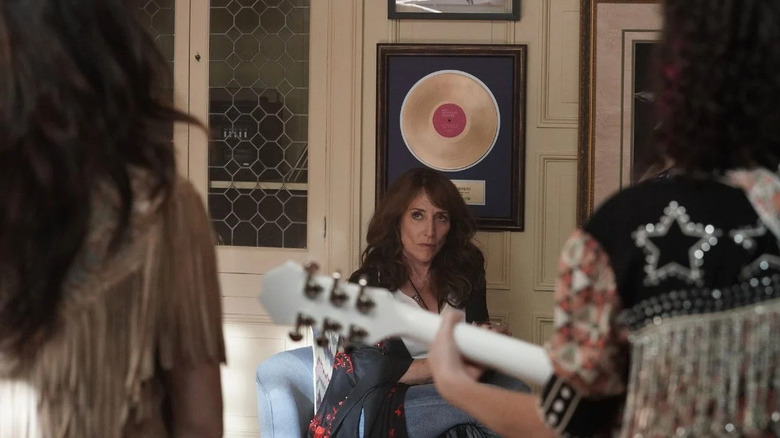
When did you realize you were happier behind the camera than in front of it?
Yeah, happier. Well, I directed my first movie in 2012, and it wasn't then. That movie was rough, as a lot of people's first movies are. And then I directed "12-Hour Shift'' in 2019, and that was about the time I realized I was still enjoying acting, but not to the place that I had enjoyed it up until then.
I got to do some really cool projects, I got to do "After Midnight'' with Jeremy Gardner and I got to do "The Stylist," and then I got to do "Lucky," which I wrote. I was doing these cool projects, but I was feeling more motivated by sitting at home on my couch and writing. Very motivated by writing. It was about four years ago I started making the transition, and luckily, I had a really good team that was supportive of me.
My manager was very supportive of me just directing and writing. It was a gradual transition. When people ask me to do stuff it's hard to say no, but I just felt everything in front of the camera, I had done everything I could do. I did a 10-minute monologue and a movie that went to Tribeca. I don't know, as far as acting goes, that was sort of like, "Oh yeah, this is why I got into this."
I stretched those creative muscles, and I had a lot to offer creatively that I wasn't getting to do as an actress. I love actors, and I think what's great about being a director is I get to still do all of the things that I enjoyed as an actor. I get to be creative, I get to collaborate, which I love, and I get to work with actors. I'm an actor's director, really. I love working with actors on their characters, I love getting into the small things that they're working out, I love letting them improv and throwing them new stuff.
Did you always know you wanted to tell stories in genre?
This is what I consume. Genre is what I consume. It'd be hard to imagine doing anything else outside of that. I do some work outside of genre, but for the most part, everything I create is going to have a genre bent whether or not I mean it to. I just worked on a show, and it was a drama, and I wrote a ghost into it. My brain is going to continue to go genre even though I'm not necessarily asked to do that. I like working within the genre community. I feel like the community is nice and supportive, and I think that some of the most creative things happening are in the genre world. I got to do "CSI" and very straightforward comedy and things like that, but I kept coming back to genre because I just found the sets were the happiest places.
Why is that?
I spent so much of my time on set. I really entered the industry on set, I learned to act in front of a national audience. NBC taught me how to act, I didn't know anything until I walked onto a set and people had to explain things to me. I didn't go to film school, I didn't go to acting school, so I learned everything from being physically on a set. And so, I think I'm very comfortable there, but I also look for the happiest people there, the people who are actually enjoying their work, and it's the horror folks. It's the genre kids. We're laughing, having a great time. Not always, I mean, there are dark moments, there are definitely been days on sets as an actress that I've cried all day because of what was required. It's tough, it's emotionally draining, but I was always happier on those sets.
'We're All Very Lucky To Get To Do This'
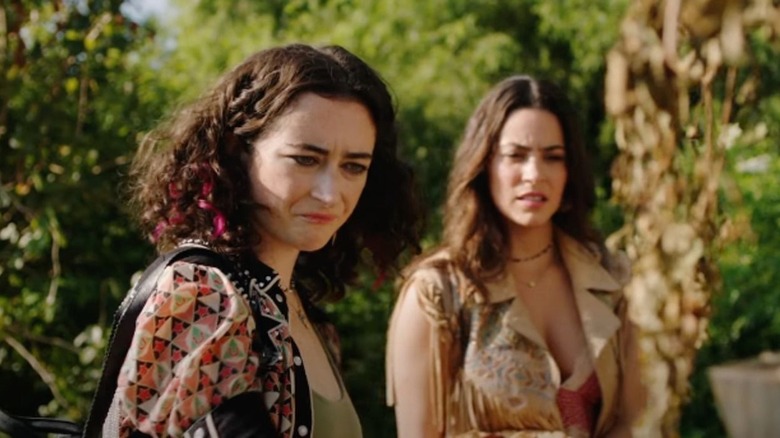
NBC was almost your film school, so what were some of the key lessons as both an actor and filmmaker?
Well, my first big show was "Friday Night Lights," and then "Heroes." I got to work with some legends on "Heroes." Greg Grunberg being one that I worked with all the time, but I got to work with Malcolm McDowell, all these huge actors. Ones that work a lot are very kind, they are nice to the people around them. Greg Grunberg, he knew everyone's name on set, he took the time to know things about them, because you're with these people day in and day out, and you should know your PA's name. I think that was something that I learned from him from these sort of veteran actors. You can get babied as an actor, you can get treated with a lot of ... You get a lot of special perks as an actor. You show up later than everyone else, you leave before everyone else, and people bring you water. That's your job!
It's not an easy job, I don't think acting is easy by any stretch of the imagination. I think getting the job is hard for an actor, so once you're there, it should be a little bit easier, especially for you to just stay in the right frame of mind. But I think from that time, I learned that I wasn't more special than anyone else, and that was important. I think the other thing I learned is that we're all very lucky to get to do this. I did "Heroes," and then I didn't work for a while after that, and it was hard for me to get a job. I didn't know what I was going to do next, and I realized that as quickly as this s*** comes, it can be taken away so quickly. So, I try to enjoy every aspect of it, particularly the making of, which has always been my favorite part anyway. Being on set, enjoy that you're here because god knows when you're going to be back.
'You Have To Fight Like Hell To Be There'
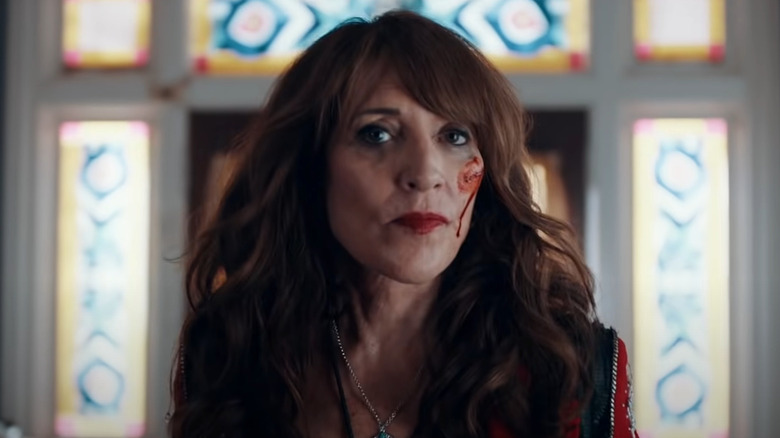
Obviously, this movie is very specific to country music, but the themes could apply to so many industries, especially film. How'd you relate to the characters and themes in "Torn Heart"?
It completely relates to the film industry. What drew me to the script were the themes of aging within the industry, particularly for women, what it looks like to age within the industry and how it quickly goes from, "Oh, you're a great young ingénue," to, "You're over 35 and no one wants to see you anymore." It is a very drastic change, and I will say personally, I have experienced it. There got to be an age where I was getting less phone calls as an actress. And so, that part spoke to me as this industry that sucks you in, takes all of your youth and your life, and then spits you back out, which was the "Sunset Boulevard" of it all.
The industry is a rough place to be. You have to fight like hell to be there, and then you have to make all of these very difficult decisions, and then you're punished for all the decisions that you do make. My big thing going into the movies [was] I didn't want to judge these characters for that. Look, it's a horror movie, so everybody gets something in the end. I won't say what, but I think the whole thing is that they're all pitted against each other in a way that they can't help, because they just want to do this one thing. They all want to play music, and you shouldn't be punished because you want to play music, because you're following the rules that the industry has laid out for you, which I think is exactly what you're doing. I think they're all following the rules that the industry has told them.
[Spoiler Alert]
And it's the guy musician who comes out on top in the end.
We talked about this so much about whether or not it was a feminist ending. Blumhouse agreed at the end that it was a realistic ending, that when you pit these women against each other, none of them will win. I'm not saying it's prescriptive, and I'm not saying this is what women should do. I'm saying you end up with these three mega-talented, very ambitious women who just want to have the success that their male counterparts have. They get pitted against each other for one slot, and the slot goes to a man.
[Spoiler Over]
'It's Helpful When You Have People Who Play Instruments And Sing'
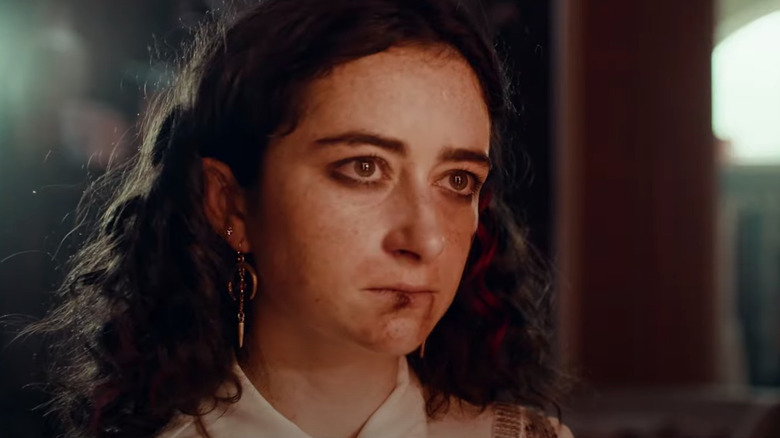
Since the music and performances are believable in the movie, how did you want to get your portrayal of the country world just right?
Well, I limited my casting to people who could sing and play instruments, so that was the first thing I did. Abby is a great guitarist. Really, my pet peeve is when you see someone strum and they're not quite strumming right. My boyfriend is a music producer. There were multiple times we were in the cut and he would come in and say, "That looks fake," and I have to redo things.
It's helpful when you have people who play instruments and sing, so I didn't have to bring in other people to do their voices. I even recorded some of it live, I recorded the last song they do, that's recorded live. Abby plays music on her own and has songs. Alexxis was not a professional musician, but she sings amazingly well, and has such a presence that I knew that would not be a problem at all, and then Katey's a singer, so that made it really easy.
For me, it was more about creating Katey as a legend, that was what I was concerned about. Harper Dutch had to be this person that when you see her you're like, "Oh, yeah, of course." It helps that everyone knows Katey, so when you see Katey. It doesn't matter what your age, you know her from something, and you know her pretty well. She has such a presence, so that first scene where she walks down the stairs, that's just her coming and she exudes that presence whether the camera is on or not, which is awesome. We shot it in such a way that we wanted her to feel mysterious, and a little shadowy, and we didn't quite know what was going on with her, and then we reveal it as the movie unfolds. Oh, the songs. Do you want me to talk about the songs?
Yeah, please.
Again, we didn't have much time, but Rachel, who wrote the script, had written lyrics. And so, I got together with this music producer, Alan Ett, and Alan and I went through the songs that we were going to need. I sent him a bunch of samples that I thought they might sound like, and he arranged them and came up with them. I think we were recording them maybe less than a week before we actually had to use them, so it was a very quick turnaround. I think all those songs sounded distinct, and it was just about finding that voice where Torn Hearts would be very poppy, whereas just the sisters would have more of a '90s country feel, so finding those voices, I think, was the key to making it feel authentic.
'I Have Some Things I Can't Quite Talk About Yet'
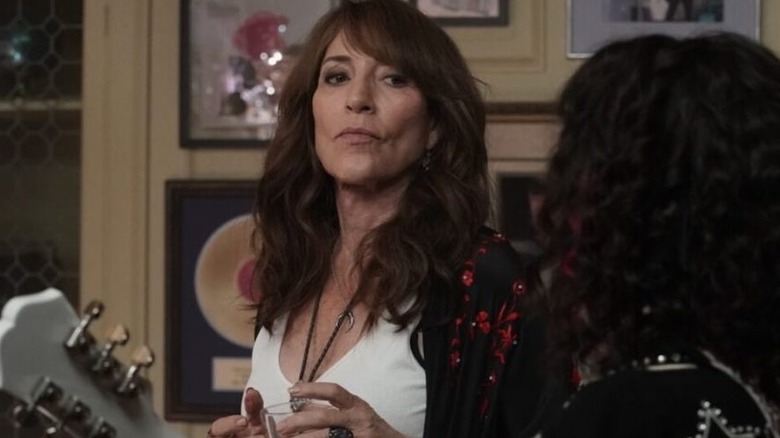
What kind of notes does Blumhouse give?
The notes process is quick and by the time I get there, it's mostly done. There's a lot of collaborators on that side. I worked with the television side, which is a lot of women, honestly, and they're all super nice and supportive. I found that they would give me notes and then we would talk through them, and if I was like, "You know what? I just think that this is better... Let me try it, but if it works better the way I did it, I think I would rather do that." They would be totally supportive of that.
Look, they watch a lot of horror movies, so I want to take their opinions very seriously. They not only financed it, but they also were just really well versed in the horror genre. Their opinions are always really interesting and valid, but then they listened to me as a filmmaker, which I appreciated.
What are your plans as a director for the future?
I want to stay doing stuff in the genre world. I love comic books and I have since I was a teenager, and so I would love to do something in that arena, as well as do more horror stuff. I have some things I can't quite talk about yet, but hopefully, there will be some cool things coming up. I find the stuff that's happening in the genre world is so inspiring right now, and people are getting budgets to make things, and things are actually getting made right now. Genre's doing cool s***, and I want to stay doing genre.
"Torn Hearts" is now available on VOD.
Read this next: The 15 Best '70s Horror Movies Ranked
The post Torn Hearts Director Brea Grant on Making a Colorful Country Music Horror Movie [Interview] appeared first on /Film.
Man's disability fraud spoiled by wife's Instagram posts showing him lifting weights and transforming into a body builder

For more than seven years, Anthony Ragusa of Huntington, New York collected more than $200,000 in disability claims from the Social Security Administration. Ragusa's stated that injuries sustained from a fall at work as an electrician prevented him from working. Turns out that not only was Ragusa still running his limousine service side hustle but he had transformed himself in a bodybuilder. — Read the rest
How to improve risk management using Zero Trust architecture
“Compliance is all about risk management and lessening risk, and the same is true of Zero Trust.”
—Abbas Kudrati
What’s risk management and why is it important?
Risk management, the process of developing a strategy for addressing risk throughout its lifecycle, normally involves four phases: risk identification, assessment, response, and monitoring and reporting.

Risk management plays a critical role in helping organizations with their security posture enhancement. Taking insider incidents as an example, they are not only costly to organizations but also time-consuming to be contained. Given the limited resources available, we have seen many organizations often prioritize investment in security controls, which can address the more critical risks. As such, the return on investment (ROI) is maximized in effectively protecting the organizations’ assets as well as ensuring their business operations. Risk management is an ongoing activity. Are the long-established risk management programs in the enterprises staying on top of the evolving digital and threat landscapes?
With trends like digital transformation, cloud migration, and hybrid work, traditional trust boundaries are getting blurred. Perimeter-driven defense is no longer adequate in protecting against the rising attack vectors. More attention has been drawn to the Zero Trust security model that assumes attackers are in the enterprise environment and encourages organizations to always verify explicitly and enforce least-privilege access.

How can Zero Trust architecture help with risk management?
Microsoft approaches the following Zero Trust architecture as a reference for customers to defend their digital estates.

Let’s look at how Zero Trust architecture can help an organization effectively manage enterprise risk management practice throughout the four phases:
1. Identification: More thorough asset discovery and risk identification with the six pillars
In the initial step of risk management, organizations need to categorize the system and information processed, stored, and transmitted based on impact analysis. With prioritization, activities of identifying threats and vulnerability to the assets are then performed. The Zero Trust architecture emphasizes the full coverage of organization assets across the entire digital estate, with six pillars specified as identity, endpoint, network, data, application, and infrastructure. Following the reference architecture would allow organizations to obtain a holistic view of their IT landscapes and associated risks.
Some questions for organizations to consider during the asset discovery and risk identification phase:
- What types of structured and unstructured data do you create, process, and store? Are all data classified, labeled, and encrypted?
- What applications do you access? Are they in the cloud or on-premises?
- What types of infrastructure do you manage—in the cloud or on-premises?
- Who has access to your resources, including network, data, applications, and infrastructure? Are they internal or external stakeholders, human or non-human actors? How are the authentication and authorization of the identities enforced?
- From which endpoints are access to your resources allowed? Are they owned by a company or individuals? How is device management performed and compliance reviewed?
- What are the normal and abnormal paths of an identity accessing your resources of any kind?
2. Assessment: Continuous risk assessment as input to access control evaluation and enforcement
Typically, a risk assessment on an information asset is performed periodically or upon major changes. It allows organizations to determine the potential risks and evaluate if the existing processes and controls are sufficient to lower the risks to an acceptable level. In the more dynamic digital world where attacks happen at cloud speed, Zero Trust architecture recommends continuous risk assessment—each request shall be intercepted and verified explicitly by analyzing signals on user, location, device compliance, data sensitivity, and application type. In addition, rich intelligence and analytics can be leveraged to detect and respond to anomalies in real-time, enabling effective risk management at the request level.
In addition, the security controls included in the Zero Trust architecture enable defense-in-depth, which shall be taken into consideration during regular risk assessment at system or organizational levels. With identity being the new first line of defense, strong multifactor authentication helps to determine if the actor is who it claims to be, reducing the likelihood of unauthorized access. Device compliance check then helps to reduce the likelihood of actors using compromised or outdated endpoints to access organization resources. In case of a breach, network micro-segmentation based on least-privilege access principle will minimize the lateral movement of malicious actors, narrowing the attack surface and containing the damage. Encryption of data in transit and at rest renders data unreadable and unusable without decryption keys, further lessening the impact of data breaches.
3. Response: Real-time responsive measures to mitigate risks throughout the request life cycle
Zero Trust architecture can also be aligned with the four general categories of risk response strategies: tolerate, operate, monitor, and improve. By design, it is recommended that telemetry, state information, and risk assessment from threat protection shall all feed into the Zero Trust policy engine to enable automatic response to threats immediately. Upon collection and evaluation of all risk signals from various sources, Zero Trust policies shall be enforced in real-time to allow, deny, restrict, or further authenticate access requests. Such approaches offer great responsiveness to risks detected in real-time throughout a request lifecycle, allowing organizations to address risks in a timely manner.
4. Monitoring and reporting: Visibility at all levels empowering risk monitoring and reporting
Risk monitoring and reporting are also critical components to ensure risk governance and assurance. It is common for organizations to keep risk monitoring and reporting at the system level. With Zero Trust architecture, organizations would benefit from the flexibility of gaining visibility at all levels into risks. At the granular level, risks of a single-user identity or sign-in will be evaluated, logged, and reported. With IT and security tools integrated, other potential breach indicators like a high volume of data access and transfer and malware detection can be associated, allowing the first line of the risk management team to obtain all necessary details for investigation. The rich threat and vulnerability data can be further processed to offer an aggregated view of an organization’s risk posture, making the risk reporting to senior management and auditors more accurate and hassle-free. With the insights generated from risk monitoring and reporting, risk management strategy and policy can be continuously reviewed and improved to stay relevant and effective.
Learn more
Learn more about the Microsoft Zero Trust framework.
Organizations may leverage the free Microsoft Zero Trust Maturity Assessment Quiz to understand their current state of Zero Trust maturity and our recommendations on the next steps. More details of how Microsoft can empower organizations in their Zero Trust journeys can be found in the Zero Trust Essentials eBook.
To learn more about Microsoft Security solutions, visit our website. Bookmark the Security blog to keep up with our expert coverage on security matters. Also, follow us at @MSFTSecurity for the latest news and updates on cybersecurity.
The post How to improve risk management using Zero Trust architecture appeared first on Microsoft Security Blog.
Here's How A Key Star Wars Character Will Figure Into The Plot Of Andor
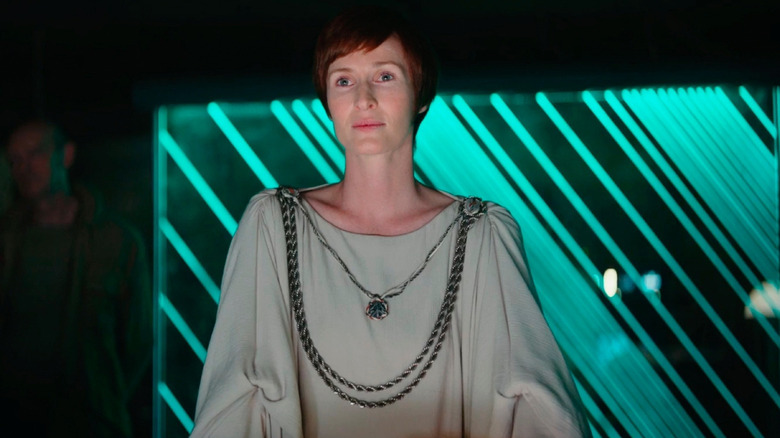
"Many Bothans died to bring us this information." It's the line everyone remembers from 1983's "Star Wars: Return of the Jedi," if only for the sheer gravity with which Caroline Blakiston delivers this statement as Mon Mothma. Of course, unless you know your "Star Wars" lingo inside and out, you've probably no idea what the heck a Bothan even is and likely refer to Blakiston's Rebel leader as "that lady with the white caftan." (The film doesn't exactly go out of its way to tell you her name.)
While Genevieve O'Reilly (very) briefly showed up as a younger Mon Mothma in 2005's "Star Wars: Revenge of the Sith," most of her scenes wound up on the cutting room floor. It wasn't until she reprised the role for 2016's "Rogue One: A Star Wars Story" that O'Reilly appeared long enough to really leave an impression. The incoming "Rogue One" prequel series, "Andor," looks to go even further and upgrade her to co-lead as it examines the early days of the Rebel Alliance and how Cassian Andor (Diego Luna) came to join its ranks.
That said, "Andor" head writer Tony Gilroy cautioned Vanity Fair that Mothma and Andor won't cross paths right off the bat in season 1. After confirming a second season is already in the works, Gilroy explained:
"['Andor' has] a huge, orchestral, Dickensian ensemble cast, with Diego at the middle of it, and Genevieve at the middle of another part of it. They intersect. I'm not going to get into how they intersect. They do have an intersection — but they do not meet. They will not meet until the second half."
Politicians And Thieves
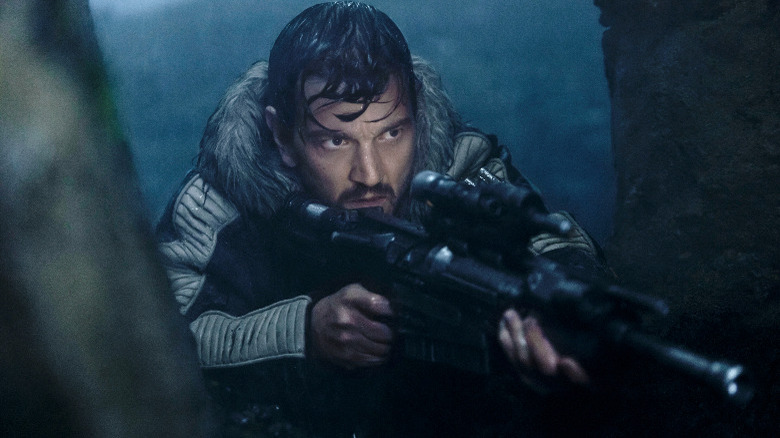
Genevieve O'Reilly previously reprised her "Rogue One: A Star Wars Story" role in seasons 3 and 4 of the animated TV show "Star Wars Rebels" (and yes, I'm going to keep pestering all you "Star Wars" fans out there to watch "Rebels" if you haven't already). But where that series takes place far away from Coruscant, "Andor" will show Mon Mothma hard at work on the galaxy's capital planet "trying to navigate the turmoil of the Emperor's new autocracy while quietly fomenting opposition," as Vanity Fair describes it.
While Mothma tries to balance being a politician with leading an underground rebellion, Cassian Andor himself will begin as what Tony Gilroy likens to a film noir antihero:
"Our show starts with a very simple, almost film noir situation for a thief, a skeevy kind of guy who gets in big trouble trying to sell something to save his ass. Someone's been watching him, a rebel talent scout, and he's sort of recruited on the worst day of his life. On episode four, we leave there and we begin to expand out..."
After Gilroy played an extensive role in the reshoots on "Rogue One" (turning what he said was a "mess" of a film into a critical and box office hit), I'm curious to see what he does building a "Star Wars" project from the ground-up. The fact that Disney and Lucasfilm are confident enough to have gotten the ball rolling on "Andor" season 2 this far out suggests they're quite pleased with what he's done, which is obviously encouraging.
"Andor" will premiere on Disney+ at a yet-to-be-announced date in 2022.
Read this next: The 20 Best Clone Wars Episodes Ranked
The post Here's How a Key Star Wars Character Will Figure Into the Plot of Andor appeared first on /Film.
10 Horror TV Shows You Can Watch With The Whole Family
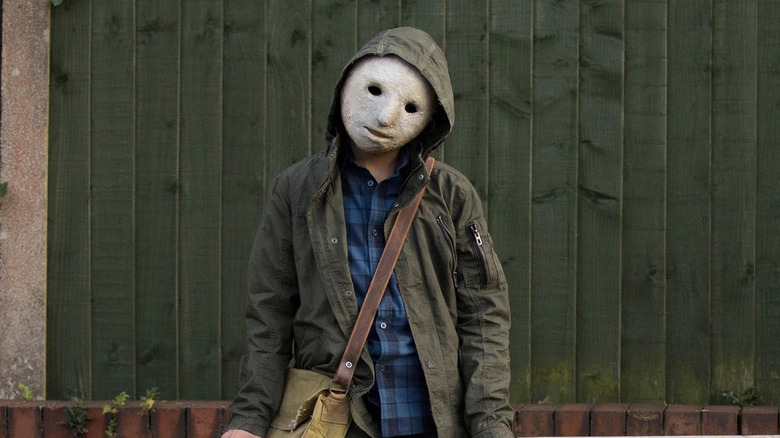
In a world that often appears to be teeming with very real horrors, many of us are still drawn to fantastical frights in our entertainment. Although it may not make sense to some, many people find comfort and excitement in horror, and children are no exception. For horror fans of all ages, there's just something about the thrill of being intentionally creeped out by the media we willfully consume. That said, keeping things age appropriate for younger horror fans can be a tricky task when you're part of a multigenerational family of fright-lovers. Luckily, we've got you covered with an extensive list of tv shows designed to terrify teens and tots alike.
Goosebumps
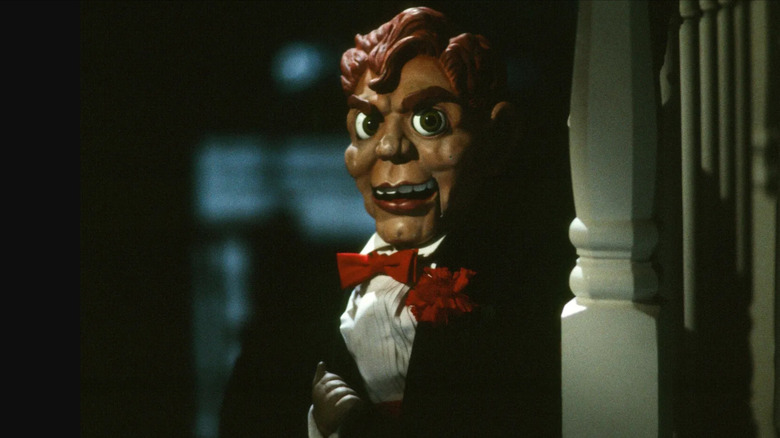
Series Run: 1995 - 1998
Format: Live-action
It's only right to kick off this list with the tv series based on beloved children's horror author R. L. Stine's hit novel series "Goosebumps." Like its written counterpart, the "Goosebumps" TV series is a horror anthology created specifically for kids, featuring young protagonists thrown into a variety of spooky scenarios ranging from silly to legitimately scary. While the special effects haven't exactly aged to perfection, the series still holds up well after all these years — so much so that my own pre-teen offspring was able to enjoy the series, forcing me to rewatch it in its entirety several times over and relive my childhood fear of Slappy the Dummy in the process.
For most of us who grew up reading and watching "Goosebumps," Slappy was easily the most frightening of all the monsters. I like to think of him as a more kid-friendly version of Chucky from the "Child's Play" universe. They're both creepy dolls who target children as potential allies in their twisted games, and neither one is above committing acts of physical and psychological violence against anyone who stands in their way. The main difference is that Slappy isn't a serial killer. In fact, he hasn't killed anyone, which I guess is the main "kid-friendly" aspect of this otherwise terrifying monster. Of course, the "Goosebumps" TV series adapts many of Stine's books, not just the "Night of the Living Dummy" titles. For instance, "Welcome to the Dead House," "Stay Out of the Basement" and "Say Cheese and Die" are among some of the stories given the live-action treatment throughout the 74 episodes of the series. In addition to the extensive number of episodes in the original series, there's a live-action reboot in the works that will eventually be streaming on Disney+. Until then, the original series is currently streaming on Netflix.
Creeped Out
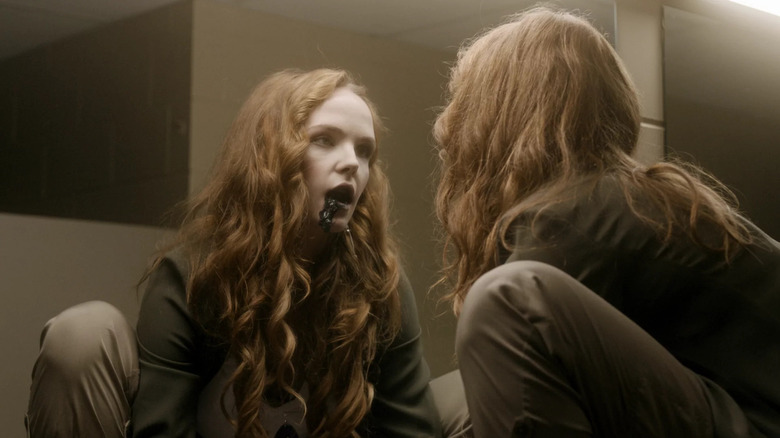
Series Run: 2017 - Present
Format: Live-action
If "Goosebumps" had a higher production value and was set in somewhat more modern times, it might be "Creeped Out." Maybe it isn't fair to compare the two, but "Goosebumps" is my point of reference for everything, and I say it with the utmost admiration and respect because it's where my personal love affair with horror began. "Creeped Out" is another children's horror anthology series on Netflix, and it's a damn good one. Each episode features a different cast of characters getting into supernatural mischief, with one character serving as a unifying element: The Curious. The Curious is a masked, child-sized figure who just shows up places and whistles a creepy little tune to signify that some scary sh*t is about to pop off. He doesn't actually interact with the other characters, and basically just serves as a neutral herald of horror for the series.
One thing that "Creeped Out" does really well is striking a balance between providing good "lessons" in each episode without coming off as overly preachy or forced. The things the characters learn in the midst of battling homicidal animatronic Santa Claus displays or traveling through alternate dimensions via hotel elevators — like not tormenting the younger children you babysit, cutting your overworked mom some slack, and being wary of individuals who try to incite drama to manipulate your emotions — feel natural and realistic as opposed to having that "very special episode" vibe. One of my personal favorite episodes is "One More Minute," which covers the topics of addiction and social isolation with its depiction of a teenage protagonist who can't seem to stop playing video games. The episode doesn't condemn gaming (thankfully), but rather uses his dependency on it to show the pitfalls of escapism gone awry. His life quite literally passes him by, and it's actually pretty sad in a way that kids can still stomach and process. "Creeped Out" has some genuinely scary moments and episodes, but manages to keep things from teetering over the edge into something that could easily be considered "too much" for younger viewers. Both seasons are currently streaming on Netflix, and they're well worth the watch.
Are You Afraid Of The Dark
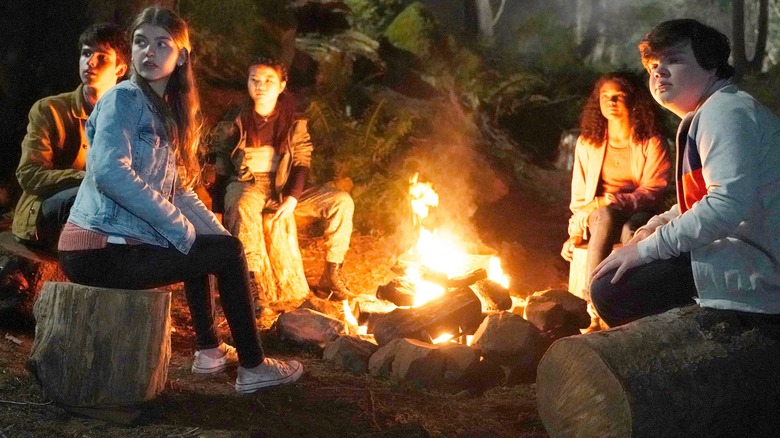
Series Run: 1992 - 1996; 1999 - 2000; 2019 - present
Format: Live-action
"Are You Afraid of the Dark" is another live-action horror anthology that I grew up watching, and one that was recently given a very successful and enjoyable reboot. In the original series, a group of youngsters who call themselves "The Midnight Society" meets up in the woods to tell each other scary stories around a campfire, and the viewers see these tales acted out in each episode. "Are You Afraid of the Dark'' actually precedes "Goosebumps" as a live-action children's horror show, and in my opinion, it has some much darker moments as well. Some of the episodes kind of fall flat where the scares and storytelling are concerned, while others contain some pretty horrific scenarios. One of the more upsetting episodes is "The Tale of the Lonely Ghost" in which a non-verbal girl is subject to such cruelty from her peers that they lock her in an abandoned house, causing her to die of starvation. Years later, another girl is dared to stay in the room where she died in order to be accepted by her own peers. The ending is happy enough, but the story definitely did not make for a silly or lighthearted affair. There's also "The Tale Of The Dark Music," in which a young boy eventually sacrifices his abused neighborhood bully to a demonic entity who lives in his basement. I'm all for standing up to bullies, and I'm not above an old-fashioned schoolyard tussle, but I draw the line at supernatural homicide. Of course, none of this is to say that I think "Are You Afraid of the Dark" is a bad show, or that it isn't for kids. I enjoyed it as a child, and I enjoy watching the original series with my own kid now.
In addition to the original series, "Are You Afraid of the Dark" has been given a fantastic modern makeover that managed to captivate me, my mom, and my daughter — that's three generations' worth of appeal! While the original series featured a different spooky story each episode, the most recent reboot follows more of an "American Horror Story" format in that each new season has a different cast of characters with an overarching narrative.
Victor And Valentino
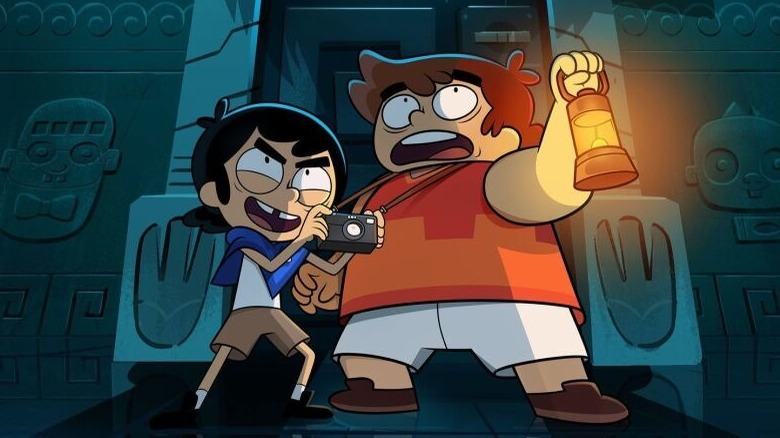
Series Run: 1995 - 1998
Format: Cartoon
"Victor and Valentino" is another show on this list that my daughter graciously introduced me to, and I'm glad she did. I've always had a keen interest in all sorts of mythology across the various cultures that make up the world we live in, so the fact that the Cartoon Network series was created to shine a "spotlight on Aztec, Olmec, and Maya mythologies" is one of the major highlights for me. The show features the fantastical adventures of its titular characters, two Latin-American brothers named Victor and Valentino during a summer spent with their sweet grandmother in a fictional town appropriately named Monte Macabre. Victor and Valentino are polar opposites in terms of personality and interests, but even though they often bump heads, they always manage to resolve their differences to save each other — and occasionally the entire town — from vampires, ghosts, and evil magicians with political aspirations.
One of my favorite things about the series is that death and the concept of the afterlife are handled in ways that realistically reflect the unique cultural beliefs, practices, and attitudes toward such topics throughout Latin and South America. I also just really like talking skeletons and Latino folklore, which the show has in abundance. "Victor and Valentino" airs on Cartoon Network and is also available to stream on Hulu and HBO Max.
Secrets Of Sulphur Springs
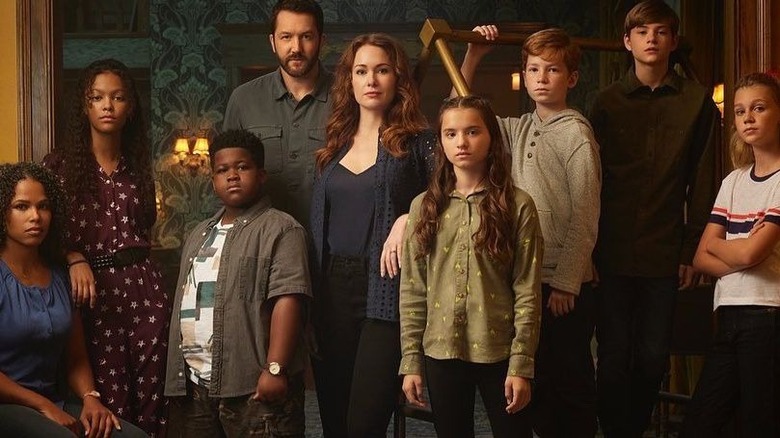
Series Run: 2021 - Present
Format: Live-action
Another fantastic, non-anthology entry on this list of children's horror shows is relative newcomer "Secrets of Sulphur Springs." Here, Disney does horror and suspense quite well set against the backdrop of a fictional Louisiana town. The main characters of the series are two thrill-seeking middle schoolers named Griffin and Harper. Together, they form a strong friendship as they investigate the mysteries surrounding the infamous Tremont Hotel that Griffin's family has moved into. Along the way, they uncover surprising facts about their own parents, travel through time, and deal with the typical trials and tribulations of growing up. "Sulphur Springs" is not only well written and engaging, but it surprised me with its willingness to confront topics like racism, familial turmoil, and jealousy in a way that didn't feel watered down or cowardly. If I had to compare the show to another, less family-friendly horror/suspense series, I'd have to pick "Stranger Things." Viewers of all ages will likely find themselves being pulled into the story and relating to the charming cast of characters. Seasons 1 and 2 of "Secrets of Sulphur Springs" are currently streaming on Disney+, and a third season is currently in development.
Courage The Cowardly Dog
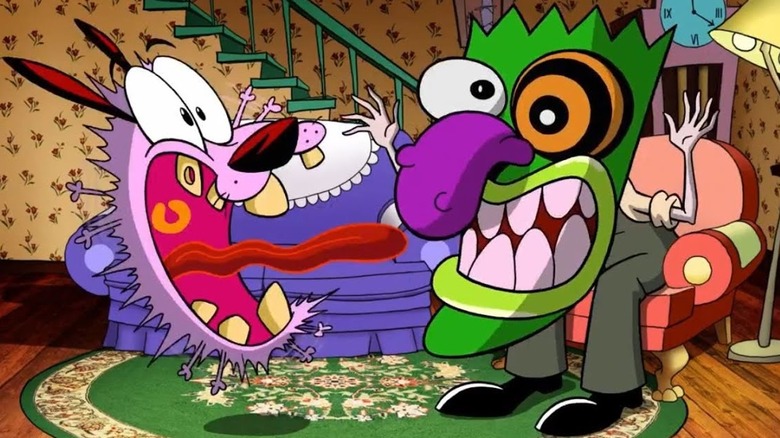
Series Run: 1996 - 2002
Format: Cartoon
Virtually every horror-loving, cartoon-consuming millennial has fond memories of watching surreal children's horror series "Courage the Cowardly Dog" on Cartoon Network, myself included. Courage, a dog who isn't nearly as cowardly as the title would suggest, given his ability to routinely protect his elderly family from otherwordly harm, literally lives in the middle of Nowhere with his beloved owner Muriel, and her mean husband Eustace. As the intro of the show states, "creepy stuff happens in Nowhere," like the silliness of a lovelorn goose deity trying to kidnap Muriel in the episode "The Gods Must Be Goosey," and the legitimately horrific haunting of Courage and the gang brought about Eustace's greed in the episode "King Ramses Curse." The mixed bag of absurdity and fright that "Courage" offers audiences of all ages is nothing short of delightful, and I can't recommend it enough for anyone who hasn't experienced the joy of watching it yet — or anyone looking to take a fun trip down memory lane. "Courage the Cowardly Dog" is currently streaming on HBO Max.
The Owl House
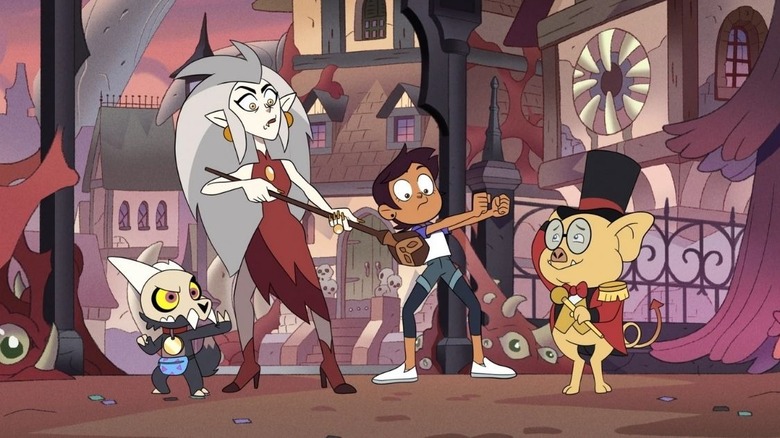
Series Run: 2020 - Present
Format: Cartoon
While the Disney animated series "The Owl House" isn't traditional horror in that it's not designed to scare viewers, there are more than enough horror and dark fantasy elements within the show to justify its inclusion here. The protagonist of the series is a young girl named Luz Noceda. After Luz wanders away from the boring summer camp her mother sent her to and stumbles upon a portal to a magical world that happens to be populated by witches, demons, and other supernatural entities. Throughout the series, Luz struggles with deceiving her mother even as she has a fun time learning to wield magic under the tutelage of a quirky and powerful sorceress named Eda (also known as "The Owl Lady" thanks to the curse she suffers from that sometimes causes her to turn into a monstrous owl-like creature).
"The Owl House" is one of my daughter's favorite shows, and with good reason. It's fun, entertaining, and filled with interesting lore. It's obvious that a lot of care and detail went into the worldbuilding of the series, and it's a nice bonus that it features a well-written protagonist of color. The show has, unfortunately, been the subject of some controversy due to the innocent, age-appropriate romance that blossoms between the teenage Luz and one of her peers, another girl named Amity. Parents of LGBTQ+ children — and parents of any children, really — will find that the show offers meaningful representation that opens the door for important conversations and acceptance. It's also just a really fun show with a great story, so there's no reason not to give it a try by watching it over on Disney+.
So Weird
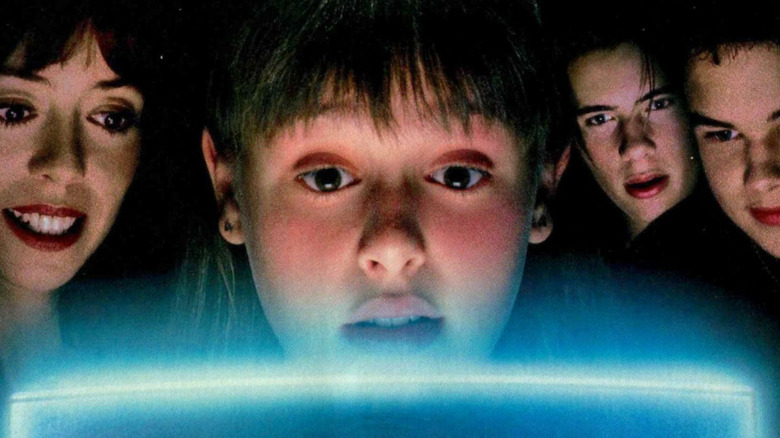
Series Run: 1999 - 2001
Format: Live-action
Unlike some of the other live-action shows on the list, Disney's "So Weird" is not a horror anthology series, so viewers get to stick with the same cast of characters throughout. Instead, it's more like a family-friendly version of "The X-Files" that served as a notably dark deviation from the comparably lighter tone and subject matter of other Disney Channel original series of the era. "So Weird" follows the paranormal adventures of a young teenager named Fiona, or "Fi" as she likes to be called. Fi lives a nomadic lifestyle on a tour bus with her brother and her mom, who happens to be a rockstar. Throughout their travels, Fi's desire to understand the death of her father and her obsession with the supernatural lead to a series of very strange events that include alien encounters, ghostly possession, and messages from beyond the grave. Fi's desire to investigate the world of the unknown is driven by the mysterious death of her father, and her desire to contact him in the afterlife.
"So Weird" definitely has some heavy subject matter when it comes to grief and family ties, but this doesn't negate the fact that it's a show designed for younger viewers. While the first two seasons focus on Fi, the third season shifts to another character and is noticeably more lighthearted than its predecessors. All three seasons of "So Weird" are available to watch on Disney+.
Scooby-Doo
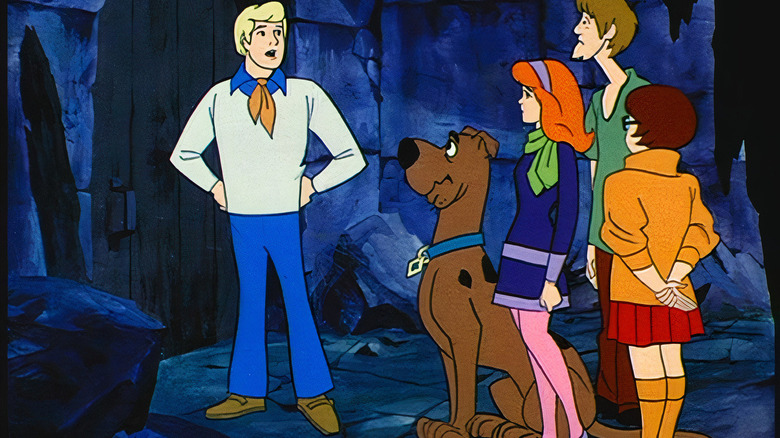
Series Run: Since time immemorial with no signs of slowing down. Ever.
Format: Cartoon
As someone who had multiple "Scooby-Doo"-themed birthday parties growing up and remains obsessed with Mystery Inc. to this very day, of course I'm going to include Scoobert Doobert and his pals on this list. Sure, the original gag is that many of the longstanding franchise's villains are just "some guy in a mask," but there's still plenty to love in pretty much every iteration of the show since the original cartoon debuted in 1969. In addition to the many cartoon makeovers and live-action movies given to the series over the years, there have been more than a few instances of genuine supernatural activity in the "Scooby-Doo" universe. For kids who aren't satisfied with the seemingly supernatural hijinx being explained away at the end of each episode, there's the 1998 animated movie "Scooby-Doo on Zombie Island," which contains real ghosts and ghouls and has one of the best songs ever created for a children's movie featuring a talking dog: "It's Terror Time Again." Go ahead and give it a listen. Try to tell me it doesn't slap. You can't. You just can't. You'd be lying.
In addition to spawning the creation of catchy tunes, there's a reason Scooby-Doo has managed to maintain relevance and a dedicated fanbase for decades: It's just good, wholesome fun. It's formulaic, sure, but it's a great formula that lends itself to longevity and creativity without sacrificing the essence of the series: just some kids (or teenagers, or young adults, depending on which version of the series you're watching) and a talking dog, eating snacks and solving mysteries while being best buddies. If that sounds like a good time, you can watch the original "Scooby-Doo, Where Are You?" series and several of the animated movies on HBO Max.
Read this next: Every Ridley Scott Movie Ranked From Worst To Best
The post 10 Horror TV Shows You Can Watch with the Whole Family appeared first on /Film.
Don’t Retire on a Cruise Ship, FFS

Retirement is supposed to be a final reward for a life spent working hard and living right. You pursue a career, pay your taxes, save some money, and then you’re able to relax and enjoy those last few decades in relative comfort and security. Increasingly, however, retirement is seen as a myth: When nearly a quarter…
The Classic Anime That Influenced Demon Slayer
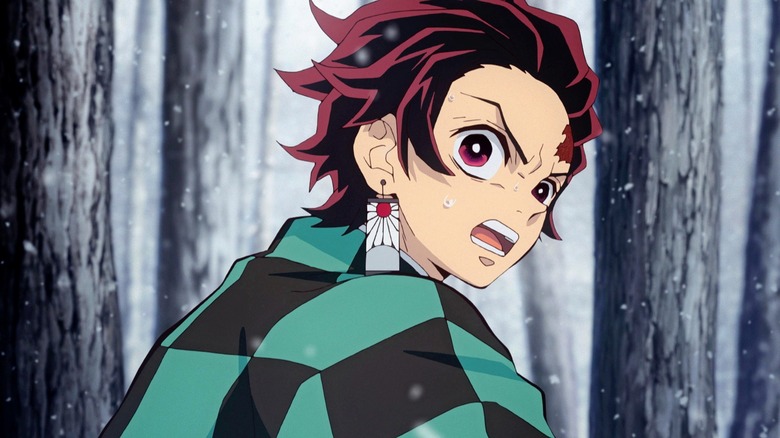
In the immensely popular anime series "Demon Slayer," a young boy named Tanjiro has his life irrevocably altered after a demon slaughters his entire family — except for his little sister. He soon sets out on a quest to join an elite group of — you guessed it — demon slayers in the hopes of curing his demon-infected sister. Along the way, he befriends two fellow new recruits, who join him in fighting off some dangerously elite demons, which all builds up to an epic battle with the biggest, baddest demon of them all.
Does any of this sound familiar? On the surface, these are the building blocks for pretty much every battle-shonen anime out there — a tragic motivation, a lifelong mission, a group of friends, and some enemies to act as stepping stones to the monster at the end of the road. Drawing comparisons between "Demon Slayer" and other contemporary shonen hits is easy because when it comes to the big stuff, they have a lot in common. Heroes slaying demons so humanity can persevere? Sounds like "Black Clover." Or "Jujutsu Kaisen." Or "Blue Exorcist" — the list goes on. But what's much more fun is noticing all the small details that two shows share in common, like the many threads linking "Demon Slayer" to a beloved classic anime, "Inuyasha."
Okay, so the similarities between the two series may not be immediately clear: "Inuyasha" is an Isekai and a love story. The series follows a schoolgirl down a well that doubles as a portal to the past, where she teams up with a hybrid dog-demon/human to collect the shards of a wish-granting jewel. Unlike "Demon Slayer" which moves at a brisk, focused pace, "Inuyasha" meanders like its plot is nobody's business and spans a whopping 167 episodes. So what exactly do "Inuyasha" and "Demon Slayer" have in common? Y'know, besides the prominence of those pesky, life-threatening demons?
The answer is a lot more than you might imagine.
Demon-Slaying Swordsmen, Unite!
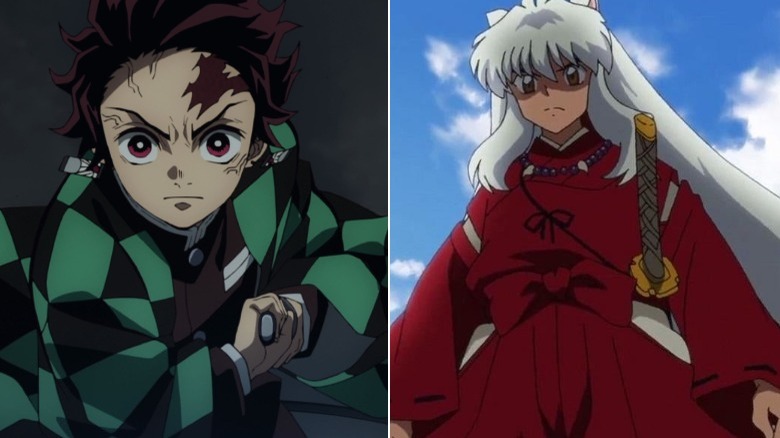
First off, audiences just can't get enough of screaming feudal warriors slashing their giant swords to take down the vicious demons! Inuyasha and Tanjiro both spend much of their time engaged in epic battles, and though they prove themselves strong very early on, they still have a long way to go before they can face the powerful demons they hope to defeat. Another thing they have in common is their ridiculously powerful sense of smell: Inuyasha has a pretty solid excuse, as a half dog-demon. It makes sense for him to have his nose to the ground, sussing things out like a walking compass. As for Tanjiro, his sense of smell just happens to be one of the special skills that he discovers while training to join the Demon Slayer corps. He can smell traps, demons ... and emotions. It's best not to question why.
Then there's that goddamn heroes' spirit. No matter how much easier it would be to give up, Tanjiro is grounded by the memory of his family and the thought of what he's fighting for. It keeps him going in even the direst circumstances. Seriously — even if it means breaking his sword and body in the process, Tanjiro finds a way to scrape himself up from the dirt. Meanwhile, Inuyasha gets in touch with his humanity through Kagome — and always picks himself back up with her in mind. In his worst moments, his friends fear he will succumb to his demon-half, but the good ol' human spirit always wins out in the end.
But enough about the perseverance of humanity, let's talk demons!
A Murder Of Demons
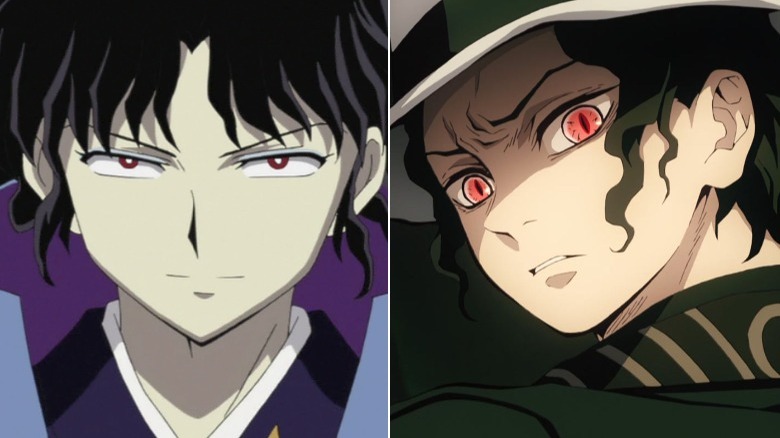
Many have noticed a resemblance between the Big Bad demons, Naraku and Muzan. They share piercing red eyes, wavy black hair, an ongoing air of mystery, and an army of top-tier demon henchmen. They also hold their own generational grudges against their respective protagonists and are in search of a magic MacGuffin that promises to make them immortal. Thus, they set up very similar adventures for their heroes: both Tanjiro and Inuyasha's squads must plow through their demon minions, who turn out to be pretty challenging adversaries, which helps ready them for the final confrontation.
Both series are also set in worlds that blend supernatural and modern aesthetics with the historical influence of feudal Japan. In "Inuyasha," the feudal setting is a world that Kagome literally falls into, which whisks her away from modern Japan to a world filled with monsters, demons, and magical artifacts. Meanwhile, "Demon Slayer" is set in Japan's Taisho era, but when our characters arrive in a city, they're met with a modernized aesthetic: kimonos, business suits, and all. Oh, and it's infested with demons, of course. With all the demons that these shows have running around, there's bound to be plenty of resemblence: like the spine-tingling spider demons that appear in both series, or the creepy white-haired villain children who also happen to be dangerous puppet wielders.
Perhaps some of these commonalities just boil down to coincidence or the plain fact of sharing a genre, but that doesn't mean their connection isn't meaningful. The popularity of "Inuyasha" has persisted so strongly that 20 years after premiering came its sequel series, "Yashahime: Princess Half-Demon." Meanwhile, "Demon Slayer" has blown up so significantly since its release that the movie version of its Mugen Train arc smashed box office records in Japan and unseated Hayao Miyazaki's Oscar-winning "Spirited Away" as the highest-grossing movie in Japan. This feat took many by surprise but looking to the success of "Inuyasha," it makes perfect sense that "Demon Slayer" has thrived: clearly, people are falling over themselves for magical, demon-infested anime about the triumphs of the human spirit.
Read this next: The 10 Best Anime Moments Of 2021
The post The Classic Anime That Influenced Demon Slayer appeared first on /Film.
Throw Out These Recalled Jif Peanut Butters 'Immediately,' FDA Says
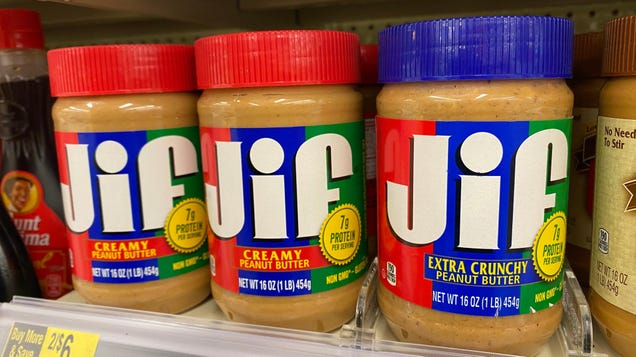
Peanut butter has long been a staple in American cupboards. In fact, there’s a good chance you have some in your kitchen right now. If so, take a minute and check the label: It may be included in a nationwide recall of 49 Jif-brand peanut butter products, prompted by concerns that it is responsible for a Salmonella…
Top Gun: Maverick Director Joseph Kosinski Talks Val Kilmer And The Ghost Of Goose [Interview]
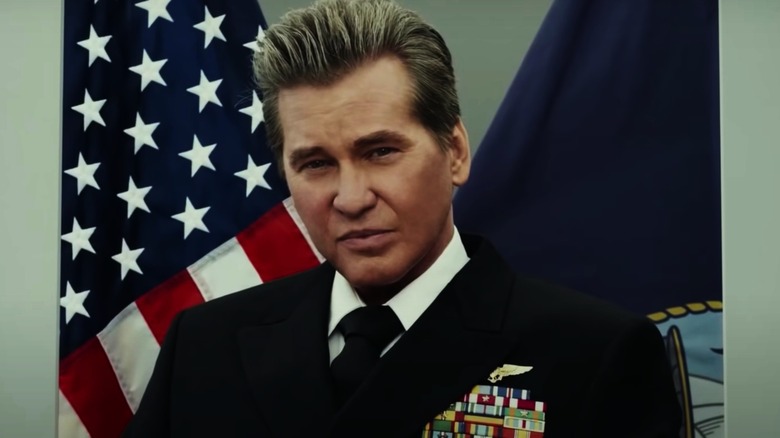
"Top Gun: Maverick" is finally hitting theaters this week after years of pandemic delay, and let me tell you, it's absolutely, positively worth that wait. In the film, we not only get to see the return of Tom Cruise's Maverick, but Val Kilmer's Admiral Tom "Iceman" Kazansky. I got a chance to speak to director Joseph Kosinski about Kilmer's return, getting the young actors up in those planes to shoot their own footage, how they actually managed that, and more.
Maverick's best friend and RIO (Radar Intercept Officer) Goose (Anthony Edwards) is no longer with us, but his presence is absolutely felt, especially because his son Lieutenant Bradley "Rooster" Bradshaw (Miles Teller) is a key character this time around. Kosinski also talks about Goose's spirit is an important part of this new movie.
By the way, when I got to speak to Kosinski for a second time on the red carpet for "Top Gun: Maverick," I asked him about "Star Wars" nods in the film. He said he didn't think about "Star Wars" himself (though I bet you will when watching it), but added, "I think when Jerry [Bruckheimer] made 'Top Gun,' I think 'Star Wars' was definitely an inspiration for them, so it makes sense that DNA would carry into ours."
In addition, Kosinski said they shot over 800 hours of footage and said there are a couple of hours of behind-the-scenes footage that he's seen that is "really great. So when the movie comes out on home video, people will get to see exactly how we made it." May I buy it now, please?
This interview has been edited for clarity and brevity.
Actors, Gravity, And Training
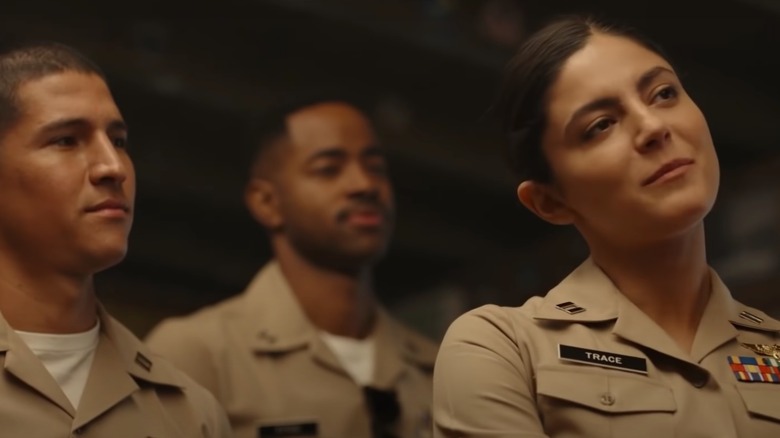
Were you ever concerned about having the actors go up in the planes?
Absolutely. I mean sending Tom up in one of these things is one thing, but sending up these young actors -- for some, this is like their first big movie -- certainly that was something that weighed on me every night before the flights, but I knew they were with the best of the best in terms of the Naval aviators that were flying them out. We had real Top Gun pilots flying our actors in this movie. So, can't do better than that.
Was there ever a concern that some of them wouldn't be able to handle the Gs, the nausea that comes from that?
Well, Tom knew what they were in for. So he developed a course for them to go through. Three months, working their way from a Cessna, which is like a slow trainer airplane, up to an aerobatic plane, then to a small jet, and then eventually to the F-18. So, by working their way up through the different G levels, they built up their tolerance. And listen, it wasn't easy. It was still very, very difficult.
This film leans on nostalgia, but it does it in the best way. It sort of trusts the audience. I'd just love to hear your thoughts on what you decided to bring back.
Well, I wanted to create the feeling that I felt when I was a 12-year-old kid and saw "Top Gun" on the big screen. So those first few minutes definitely tell you this is a "Top Gun" film, but shortly after that, I think it transitions into a new sequence that tells you this is going to be "Top Gun" for 2022 -- a new story. It's still Maverick, but a new story for him.
'You Can By My Wingman Any Time'
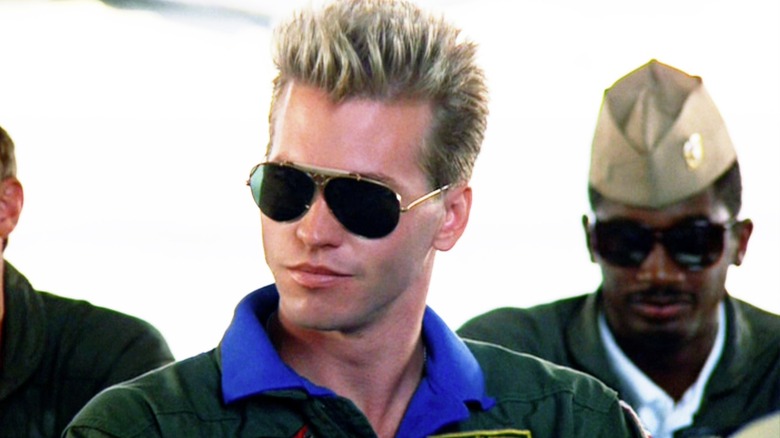
As someone who was a huge fan of the original, seeing Val Kilmer back was a really big deal. And I'd love to hear about working him into the story.
You know, Val actually came in and met with Jerry [Bruckheimer] and I and had kind of an idea of how Iceman could be integrated in. Tom, Jerry, and I couldn't imagine doing the film without him, and seeing him and Tom together on screen for the first time since 1986, that's something. That's one of those days on set I'll never forget.
I'd also love to hear about even putting sailing into this as another way to get the "need for speed."
Yeah. Well, Penny Benjamin is a character that we re-introduced in this film. Obviously, she was mentioned in the first film, but now we get to finally meet her. She's the [daughter] of a Navy Admiral. And we like the idea that she brings Maverick into her world for a scene and shows him what she can do. So I love that scene. The idea that kind of came from one of the Naval advisors that I talked to early on.
Goose has a major presence in this film even though he's not really in it. How important was that to you?
I mean, the friendship between Maverick and Goose is, I think, the thing that people remember most from the first film. That whole notion of a wingman as someone who always has your back. To have that spirit of Goose present throughout this film, and certainly embodied in the character of Rooster, his son, that was, I think, the emotional hook that really got Tom excited about going back.
After more than thirty years of service as one of the Navy's top aviators, Pete "Maverick" Mitchell (Tom Cruise) is where he belongs, pushing the envelope as a courageous test pilot and dodging the advancement in rank that would ground him. When he finds himself training a detachment of TOPGUN graduates for a specialized mission the likes of which no living pilot has ever seen, Maverick encounters Lt. Bradley Bradshaw (Miles Teller), call sign: "Rooster," the son of Maverick's late friend and Radar Intercept Officer Lt. Nick Bradshaw, aka "Goose."
Facing an uncertain future and confronting the ghosts of his past, Maverick is drawn into a confrontation with his own deepest fears, culminating in a mission that demands the ultimate sacrifice from those who will be chosen to fly it.
"Top Gun: Maverick" will hit theaters on May 27, 2022.
Read this next: Butkus To Punchy: Ranking All 8 'Rocky' Movies From Worst To Best
The post Top Gun: Maverick Director Joseph Kosinski Talks Val Kilmer and the Ghost of Goose [Interview] appeared first on /Film.
The Proper Reading Order For Dune
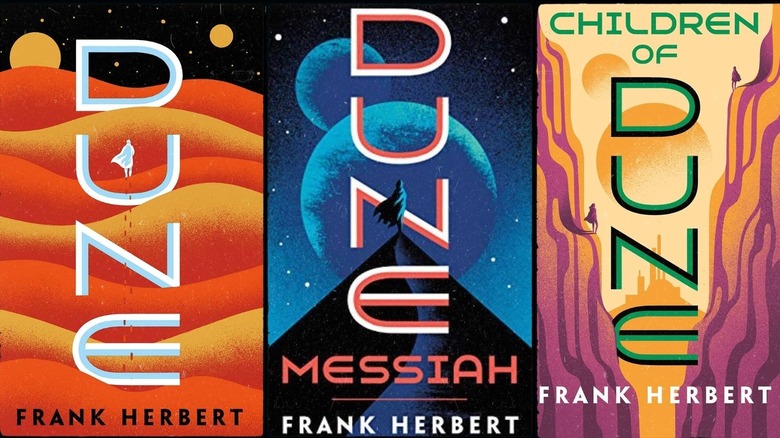
Long before Denis Villeneuve's "Dune" burst onto the scene and captivated a legion of science fiction admirers, the pages of Frank Herbert's epic 1965 space opera novel had millions of fans invested in their story. Although Villeneuve's adaptation paints a relatively faithful portrait of sci-fi's resident sad boy Paul Atreides, there's nothing quite like the experience of reading Herbert's legendary series of novels. While many have been introduced to "Dune" through its many adaptations, experiencing the characters' journey, the visceral scenery of Caladan, the sand dunes of Arrakis, and its giant, almost-mythical sandworms coming to life through the written word is an experience every "Dune" fan should be able to have.
If you've been thinking about reading "Dune" — especially before Villeneuve's sequel arrives next year — you might see that finding the proper reading order is a perplexing ordeal of sorts. Herbert wrote five sequels to the original story, and after his death in 1986, his son, Brian Herbert, and sci-fi author Kevin J. Anderson published several prequel stories, which came to be known as "Prelude to Dune." Their writing partnership continued, and they later wrote two sequels (based on Herbert's notes discovered a decade later) and completed the original "Dune" series. And more. So you could read the entirety of Herbert's work to immerse yourself in the world of "Dune" or the first few books to prepare for the film. But, if you want to follow the stories of House Atreides and their adventures on Arrakis to the very end, you may have some work cut out for you. Here's the ideal reading order for the "Dune" series and its many prequels.
Dune By Frank Herbert
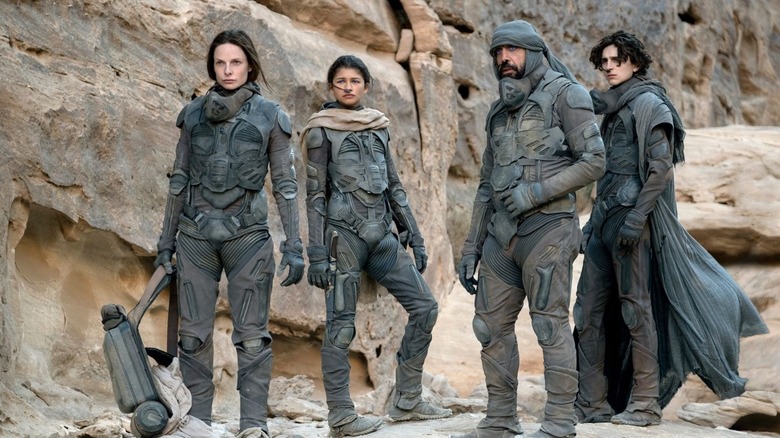
The first book in the epic series, "Dune," is set in the distant future in an intergalactic feudal society where royal houses control planetary fiefs. It tells the story of Paul Atreides, whose family is summoned to take control of the barren desert planet Arrakis. Despite having a brutal, inhabitable climate, it is the only site that produces melange or "spice," a psychedelic drug with life-enhancing abilities. It's also a resource used for interstellar travel, hence significantly valuable. Arrakis is inhabited by giant sandworms and an indigenous population known as the Fremen, who have learned to survive the planet's harsh environment over generations. The book follows House Atreides and their attempt to establish control of the planet, with the rival House Harkonnen threatening to destroy their efforts. Due to a prophecy, Paul is eventually targeted as a Messiah figure and worshipped by the people of Arrakis. The story is teeming with political warfare, themes of ecology and technology in our world, and religious fanaticism, among other things. It also features metaphors for the present-day — the empires in "Dune" are all struggling to take control of the one planet with the most valuable natural resource in their universe. I'm going to leave you with that.
Dune: Messiah By Frank Herbert
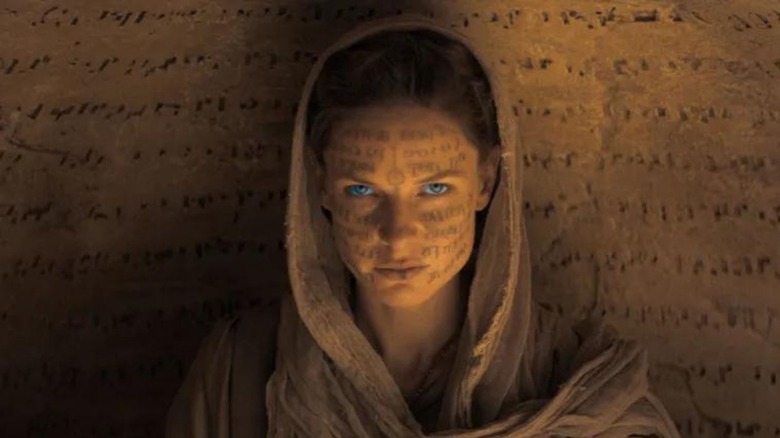
Herbert's first sequel is set 12 years after the events described in "Dune." Here, Paul "Mua'Dib" Atreides rules as Emperor after accepting the role of Messiah to the Fremen. An essential concept of the "Dune" series is Paul's concern that his rule will unleash a holy war (referred to as a jihad) led by the Fremen under his name. He's the most powerful Emperor the universe has ever known, but his word is defenseless against the religious juggernaut created by his ascension. Paul also has visions that suggest that their crisis is far from a disastrous future that awaits. He soon sets out on a journey to end the inevitable, acting as a ruler and a religious figure for the Fremen. In "Dune: Messiah," Herbert unmasks Paul's status as an all-powerful hero and Messiah while inverting everything his former novel stood for. "Should one man have that kind of power?" is a question the author unravels in this book.
Children Of Dune By Frank Herbert
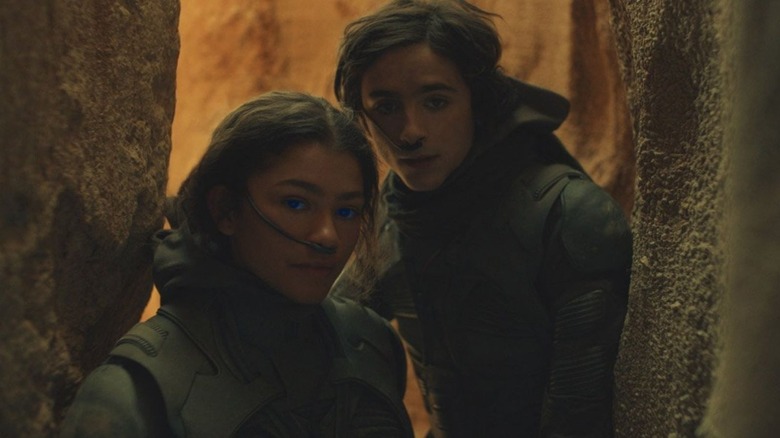
The story of the second sequel in the "Dune" series begins nine years after the events of "Dune: Messiah" and largely follows the story of Paul's twin children — who are heirs to their father's gifts — and have "prescient" visions of the fate of the universe. Their predictive abilities are coveted by their scheming aunt Alia, but Leto and Ghanima Atreides refuse to be anyone's puppets. "Children of Dune" dials up on deceitful relatives and themes of political intrigue as the Bene Gesserit endeavor to gain control of the spice and Paul's twins, and House Corrino plots to take control of the throne. Readers have often complained that "Children of Dune" is a very lengthy book — but its story is essential to read before moving on to its sequel.
God Emperor Of Dune By Frank Herbert
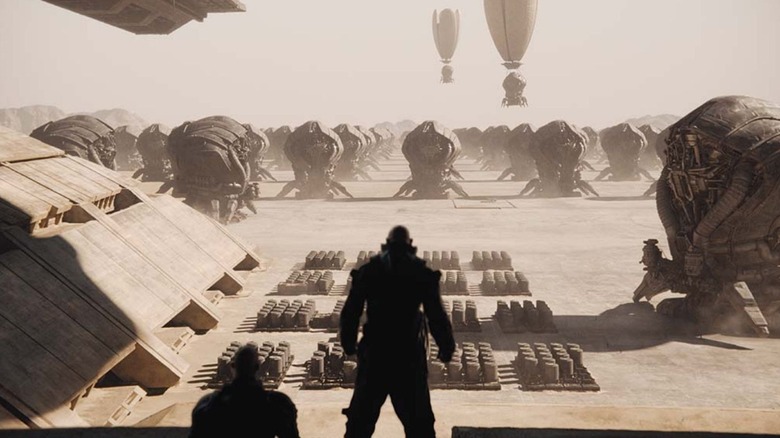
Timeline wise, "God Emperor of Dune" is set 3,500 years after the former novel and takes place over a thousand years. Paul's son Leto II Atreides merges with a sandworm (weird, right?) to grant himself near-immortality; he's a "God Emperor" to his admirers and a tyrant to everyone else. As Leto II works towards preventing the extinction of humanity, a rebellion led by his rival family member threatens to dethrone him. You can expect to see more deceitful relatives in this one.
Heretics Of Dune By Frank Herbert
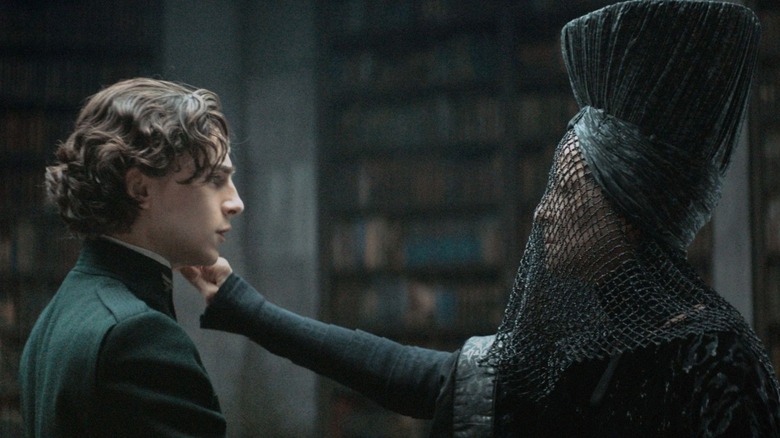
"Heretics of Dune" jumps 1,500 years forward in time following the ending of the reign of God Emperor Leto II Atreides. The Known Universe is thrown into chaos. Severe famine in the world and the introduction of navigation machines cause billions of people to leave homes and wander into unknown space. This event, an explosion of humanity, is called the Scattering, which worsens following Leto II's death. The Bene Gesserit Sisterhood are compelled to make decisions that will dictate their future — to follow the Golden Path or keep their traditional roles of guiding human progress through hidden manipulation. And then there's a prophecy: a young girl who can control sandworms will return the Empire to its former glory. Read it to see if she succeeds!
Chapterhouse: Dune By Frank Herbert
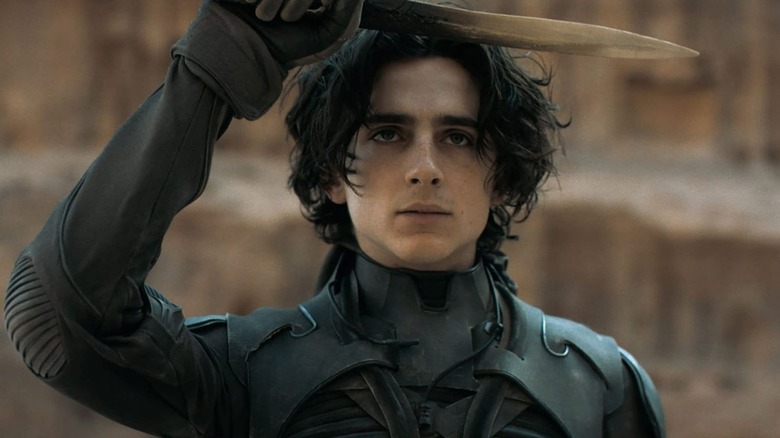
"Chapterhouse: Dune" is an immediate sequel to "Heretics of Dune" and chronicles the Bene Gesserit sisterhood's trials and tribulations against the brutal Honored Matres, an aggressive matriarchal cult obsessed with power, violence, and sexual domination. Arrakis is destroyed, and the fate of the Empire rests in the hands of the Bene Gesserit women, who breed sandworms and seek to control spice production –- in the hope of remaking the galaxy for the future. The novel was published a year before Herbert's death and left the ending of the "Dune" series inconclusive for two decades before his son Brian Herbert and sci-fi author Kevin J. Anderson published two sequels based partly on notes left behind by Herbert for his planned seventh novel.
Hunters Of Dune And Sandworms Of Dune By Brian Herbert And Kevin J. Anderson
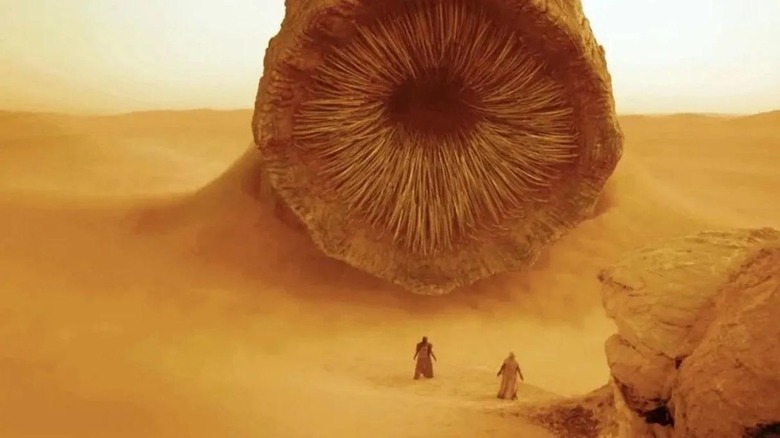
"Dune" readers had been yearning for the story to wrap up for years when Brian Herbert and Anderson came to their disposal. The writers co-authored the two concluding novels of the "Dune" series with insight from a long-lost outline discovered in one of Herbert's safety deposits. "Hunters of Dune" and "Sandworms of Dune" follow up on the themes explored in the last few books about the danger to humanity from a remote, unidentified, and everpresent "great enemy." All burning questions pertaining to the future of Arrakis and the consequences of a war between Man and Machine are laid to rest. This is where Herbert's space opera comes to an end.
If you're still hoping to continue immersing yourself in the world of Frank Herbert's deep-rooted sci-fi world, there are several short stories and prequels that might interest you.
Prelude To Dune By Brian Herbert And Kevin. J Anderson
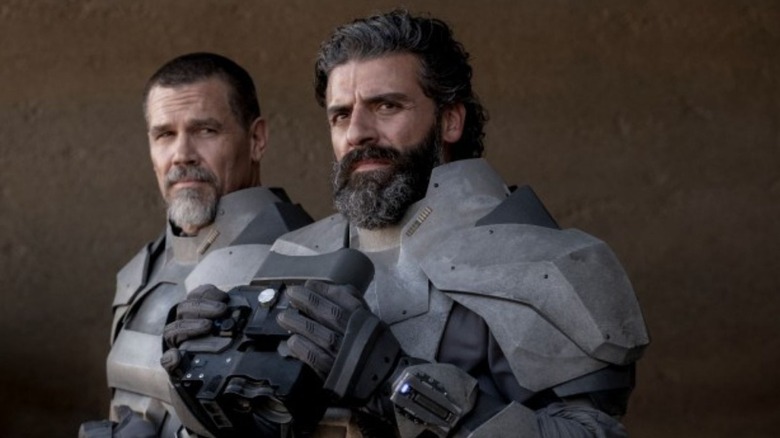
Brian Herbert and Kevin J. Anderson's first "Dune" collaboration began a little over a decade after Frank Herbert's death. They wrote three direct prequel novels to "Dune" that exists as a buildup to the book's noteworthy events and set the ball rolling for all of the story's mythology. They establish a foundation leading up to the battle over Arrakis — it focuses on the characters of Shaddam and Baron Harkonnen. It also summarizes Duke Leto's rise to power (as seen in the first book).
Here's the reading order for the books:
1) "Dune: House Atreides"
2) "Dune: House Harkonnen"
3) "Dune: House Corrino"
Legends Of Dune By Brian Herbert And Kevin J. Anderson
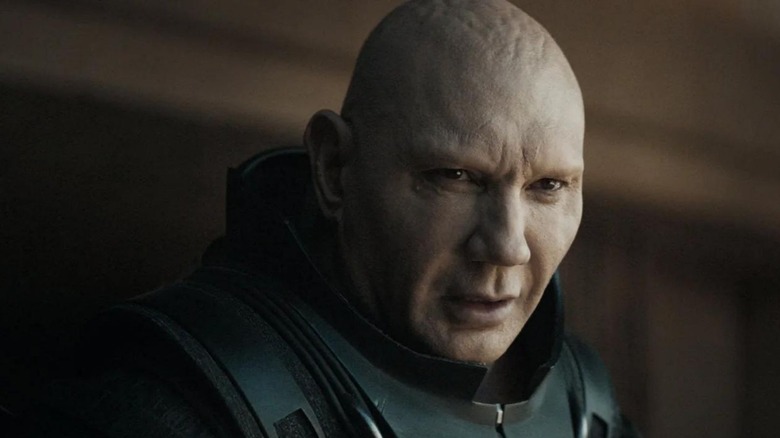
Brian Herbert and Kevin J. Anderson's commitment to the "Dune" universe is a gift that keeps on giving. "Legends of Dune" is another prequel trilogy that outlines a conflict 10,000 years before the events of "Dune" and sets up the origin of the Known Universe's culture through the lens of a war struck between humanity and machines, which is referred to as "The Butlerian Jihad." The origins of major organizations like the Bene Gesserit, Spacing Guild, and House Corrino, whose Padishah Emperors ruled the universe until "Dune," are explored in these novels. You can read these books independently because they're unrelated to the "Dune" universe regardless of them becoming core parts of the series later on.
Here's the reading order for the books:
1) "The Butlerian Jihad"
The last free humans are seen opposing the thinking machines.
2) "The Machine Crusade"
The thinking machines fight back, and the outlaws on Arrakis take the first steps to establish themselves as Fremen.
3) "The Battle of Corrin"
The final apocalyptic showdown between humans and robots comes to life.
Heroes Of Dune By Brian Herbert And Kevin J. Anderson
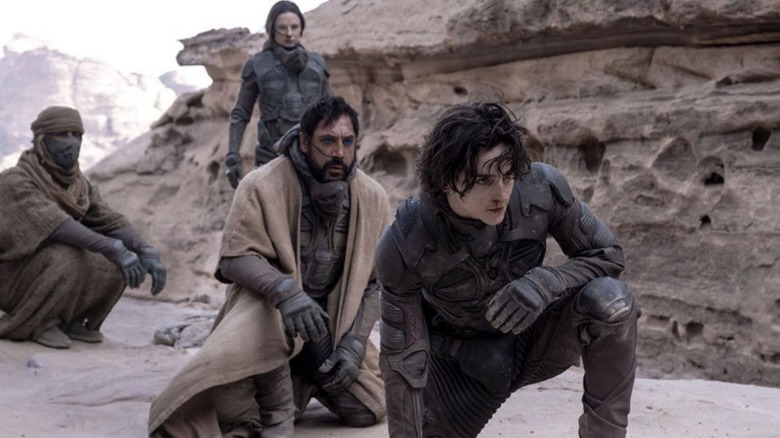
The "Heroes Of Dune" is a duology set in the time of the Corrino Empire and the Ascencion of House Atreides. Think of these as books that cover the missed time — the gaps — between Herbert's original novels. They also feature flashbacks to Paul's childhood.
Here's the reading order for the two books:
1) "Paul of Dune"
Divided into seven sections, "Paul of Dune" alternates between two time periods. The first is set five years before House Atreides moved to Arrakis, and the second involves the life of the Mua'Dib (and the spreading of the holy war) following his ascension as Emperor of the Known Universe.
2) "The Winds of Dune"
The second book covers the life of Lady Jessica at the time when she returns to Arrakis to probe the disappearance of her son Paul, which takes place at the end of "Dune: Messiah."
Great Schools Of Dune By Brian Herbert And Kevin J. Anderson
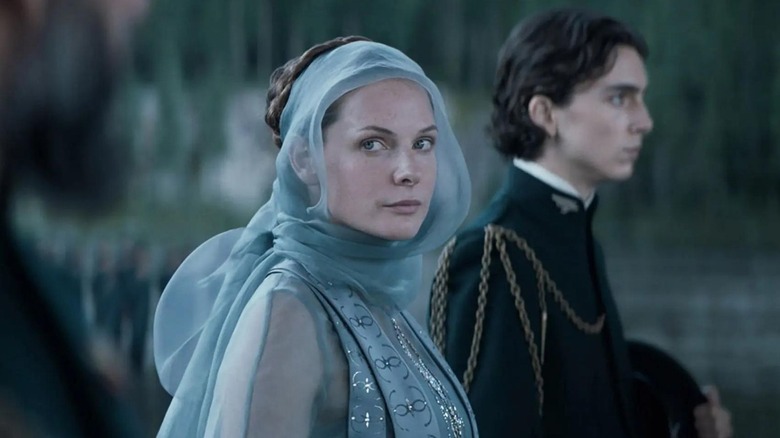
A direct sequel to the "Legends of Dune" trilogy, "Great Schools of Dune," is set in the century following "The Battle of Corrin." It outlines the formation of various organizations from the original "Dune" book. The titles refer to the Bene Gesserit Sisterhood, the Mentats (human computers that were developed to replace thinking machines), and the Spacing Guild.
Here's the reading order:
1) "Sisterhood of Dune"
2) "Mentats of Dune"
3) "Navigators of Dune"
The Caladan Trilogy Brian Herbert And Kevin J. Anderson
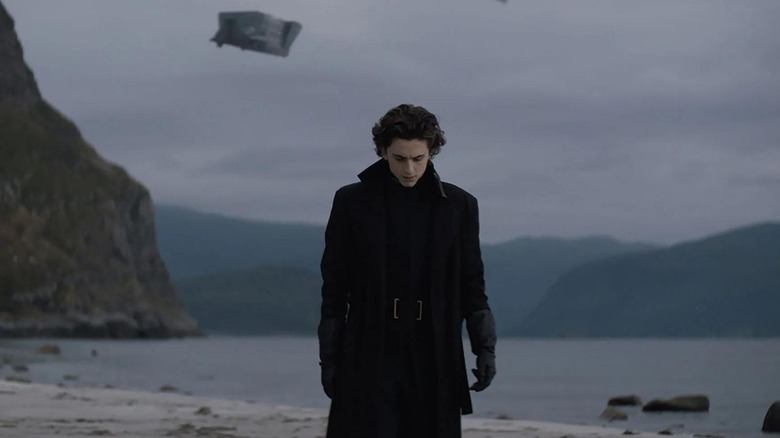
The most recent "Dune" spin-off trilogy features three books that chronicle the lives of the Atreides. There's a prequel about Leto Atreides (which follows his narrative from a quiet ruler to a power player in the Known Universe). Another prequel story follows Lady Jessica's journey and adventures in the year before the events of "Dune." A third book is set to be released later this year and serves as a deep dive into the life of Paul Atreides and his transformation from a teenager to a messiah.
Here's the reading order:
1) "The Duke of Caladan"
2) "The Lady of Caladan"
3) "The Heir of Caladan" (to be released in late 2022)
Wait ... There Are Graphic Novels Too!
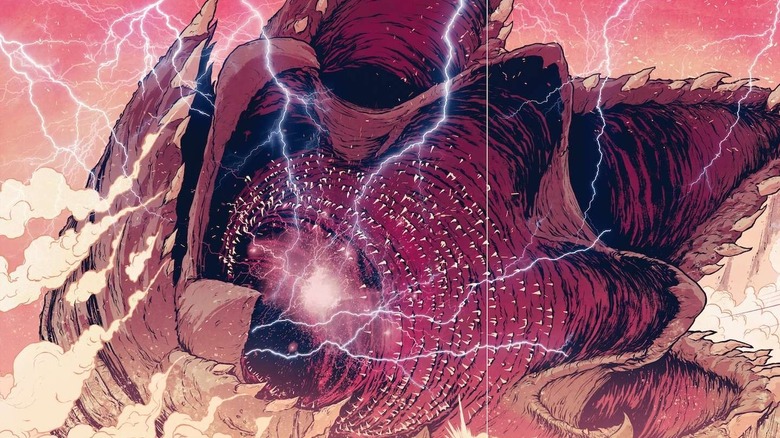
Why stop at novels when you can expand into different mediums? It appears that there's no stopping Brian Herbert and Kevin J. Anderson.
There are two graphic novels that feature Raúl Allén and Patricia Martín's intricately illustrated scenes from the book, with a stunning visual language partly covering the first book. While the first one explores the adventures on Arrakis, the second sees Lady Jessica and Paul stranded on the desert planet after being overthrown by House Harkonnen. It's beautiful and a great gift that any "Dune" fan will thoroughly enjoy having.
Here's the reading order:
1) "Dune: The Graphic Novel"
2) "Dune: The Graphic Novel, Book 2: Muad'Dib"
"Dune" is an epic, sprawling series that has captured readers' attention for decades, long after the first book was published. With the book's big-screen adaptation gaining popularity and critical-acclaim, more and more people are falling in love with the unique world. If you find yourself to be an aspiring "Dune" superfan who wants to discover Paul's story from the beginning, getting started on the books right away is your best plan.
Happy reading!
Read this next: 95 Best Sci-Fi Movies Ever
The post The Proper Reading Order For Dune appeared first on /Film.
Where You've Seen Every New Cast Member In Stranger Things Season 4
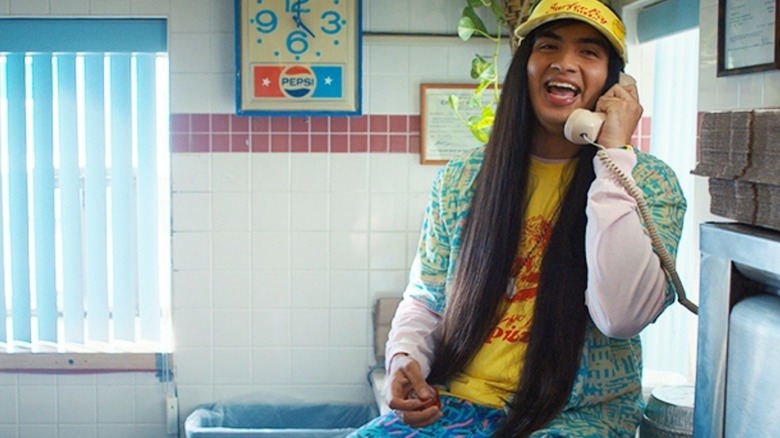
"Stranger Things" is back, and it's bigger than ever. The Netflix juggernaut will air seven episodes of its super-sized fourth season on May 27, 2022, with the last two movie-length chapters dropping July 1.
The new season includes more fresh faces than ever as our favorite characters go beyond the borders of Hawkins for the first time. While several core heroes stay put in the freaky Indiana town, Joyce (Winona Ryder), Eleven (Millie Bobby Brown), Will (Noah Schnapp), and Jonathan (Charlie Heaton) make their move to California. Meanwhile, a very not-dead Hopper (David Harbour) seems to be trapped in Russia. Longer runtimes and more settings means more opportunities for newbies to join the fold. That, in turn, means more chances to yell, "What do I know them from?!" at your TV.
Luckily, that won't be a problem, as we've got you covered with a rundown on all the show's new cast members.
Joseph Quinn As Eddie
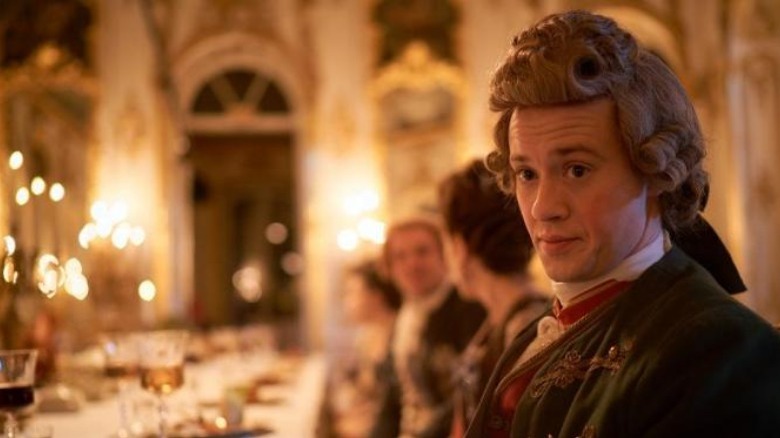
As the leader of Hawkin High School's Hellfire Club–aka the Dungeons and Dragons group–Eddie Munson is a proud outsider with a knack for theatricality. The metalhead teen with a mane of frizzed-out hair plays a major part in the show's fourth season, but you've never seen the actor behind the role quite like this before.
British actor Joseph Quinn, who plays Eddie, is to date most known for the kind of period dramas Eddie himself would hate. He's played Arthur Havisham in the Charles Dickens universe series "Dickensian," Leonard Bast in a recent adaptation of "Howard's End," Enjolras in BBC One's 2018 take on "Les Miserables," and Tsarevich Pavel opposite Helen Mirren in "Catherine the Great." If you're a horror fan, check out the great D-Day-set movie "Overlord," where Quinn briefly appears.
Eduardo Franco As Argyle
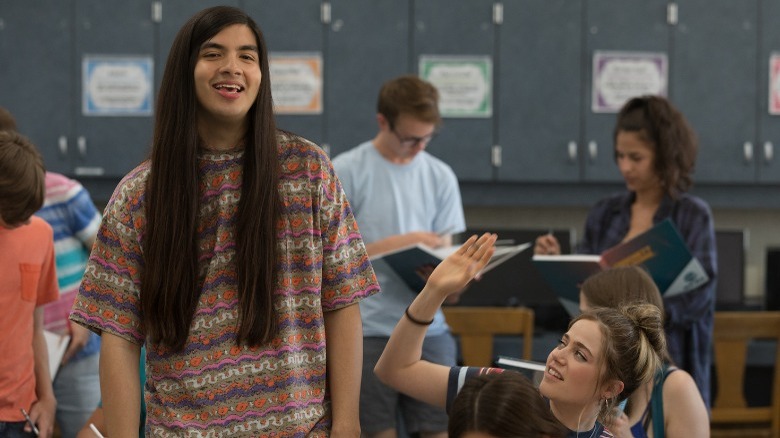
Affable stoner Argyle injects some "Dazed and Confused" into the new season of "Stranger Things." The super-chill teen works at Surfer Boy Pizzas and becomes a friend of Jonathan's after the Byers family moves to California. Actor Eduardo Franco is instantly recognizable thanks to his impressive mane of hair and general good vibes. Franco has popped up in a handful of teen-centric titles over the past few years, and has made a strong impression every time.
His first breakout role was in Netflix's hilarious true crime mockumentary series "American Vandal," where he played a student named Spencer. The next year, he kept the body humor going with "The Package." This one's a bawdy teen comedy about a spring break camping trip that goes awry when Franco's character, Jeremy, accidentally cuts off his own genitalia. For real. That's really the plot. At any rate, you probably know him most from "Booksmart," where he plays supersenior Theo.
Robert Englund As Victor Creel
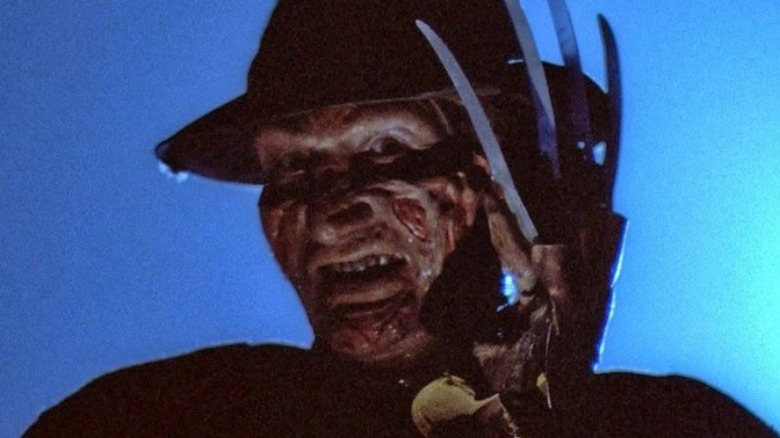
"Stranger Things" welcomes a horror legend into the fold this year with the addition of Robert Englund to the cast. Englund plays a character named Victor Creel, a shadowy character who was put away in a psychiatric hospital after being found responsible for a gruesome murder back in the 1950s. Now, as we can see from the new season's trailer, he's a haunted–and haunting–old man with stitched up wounds where his eyes should be.
Englund is one of the most recognizable figures in horror history, having played nightmare-haunting villain Freddy Kreuger in all eight "Nightmare on Elm Street" films. He also has a wonderfully meta turn in the 1998 slasher "Urban Legend," where he plays a professor of folklore. Englund has had many, many memorable roles throughout his decades-long career, from his breakout role in the popular 1983 miniseries "V" to voice work for animated series like "The Batman" and "The Spectacular Spider-Man." You can also spot some of Englund's earliest work in Tobe Hooper's crocodile horror flick "Eaten Alive," where he plays a local deviant named Buck.
Jamie Campbell Bower As Peter
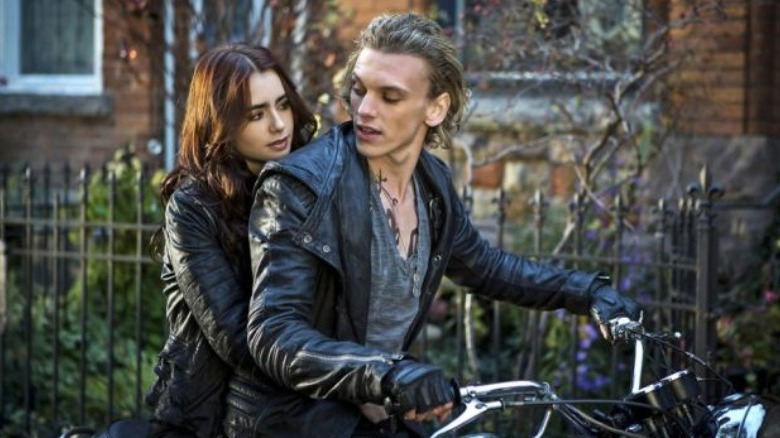
Jamie Campbell Bower plays Peter, a friendly orderly at a psychiatric hospital in the new season. Though he's not visible in the show's trailers, the initial Twitter post casting announcement from back in 2020 says that Peter is "tired of the brutality he witnesses day after day. Will Peter finally take a stand?"
Bower comes into "Stranger Things" with a fervent fanbase of his own, stemming in large part from his turn as hunky Shadowhunter Jace in an adaptation of Cassandra Clare's popular book series, titled "The Mortal Instruments: City of Bones." In fact, the actor has starred in several fan-favorite franchises, playing a young Gellert Grindelwald in the "Harry Potter" movies and the Volturi leader Caius in the "Twilight" films. His breakout role came in 2007, when Bower played the sweet-voiced suiter Anthony, pining for his imprisoned love, in "Sweeney Todd: The Demon Barber of Fleet Street."
Grace Van Dien As Chrissy
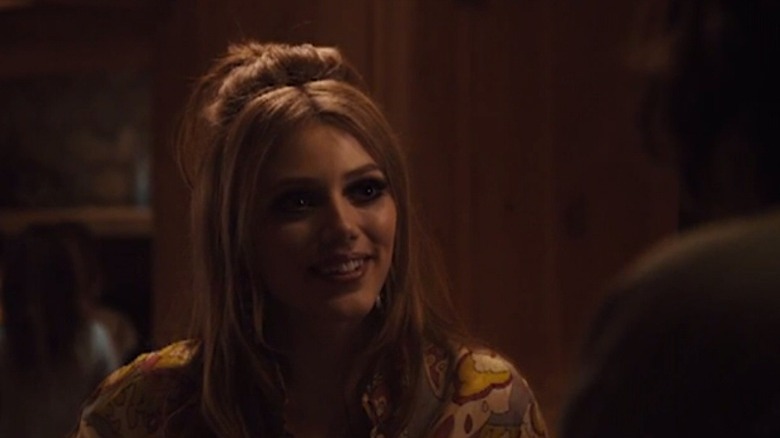
Grace Van Dien plays Chrissy, a seemingly perfect and popular cheerleader, in the new season of "Stranger Things." As the casting announcement for the character points out, "beneath the seemingly perfect surface lies a dark secret."
You may recognize Van Dien from the Manson family murders film "Charlie Says," where she played ill-fated actress Sharon Tate. She also played student Brooke in the first two seasons of the Netflix teen mystery "Greenhouse Academy," and pregnant teen Katie in the short-lived NBC show "The Village."
Mason Dye As Jason
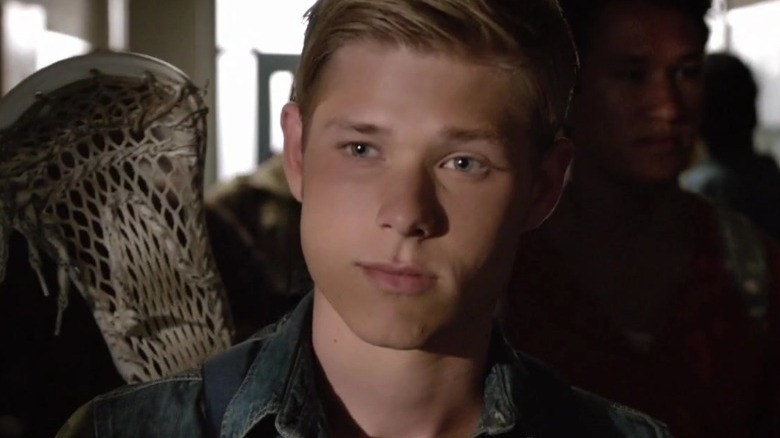
Every '80s teen movie needs a star athlete against which to contrast all its average-joe characters against, and this year, that's Jason. The privileged jock seems to have it all–success, popularity, and a seemingly perfect girlfriend–until Hawkins falls prey to a new villain.
If you were part of the "Teen Wolf" sensation that was sweeping the nation when the MTV show aired from 2011-2017, you likely caught Dye playing an assassin slash lacrosse player named Garrett in the show's fourth season. Dye also took on the challenging role of abused teen Chris in an adaptation of V.C. Andrews' controversial book "Flowers in the Attic" in 2014. The actor has also had significant roles in MTV's "Finding Carter" and the popular Prime Video series "Bosch."
Regina Ting Chen As Ms. Kelly
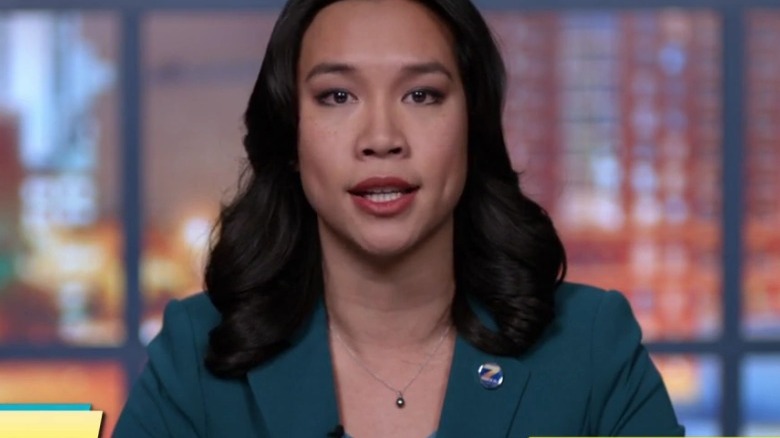
Regina Ting Chen will play guidance counselor Mrs. Kelly in the new season. She's a compassionate counselor who's hoping to help out a few different students who are struggling this season.
This could end up being a breakout role for Chen, who has had short appearances in lots of great projects in recent years. The actor has so far appeared most often playing news reporters, and can be spotted in "Spider-man: No Way Home," "The Falcon and the Winter Soldier," "Black Lightning," and even "The Conjuring: The Devil Made Me Do It."
Sherman Augustus As Lt. Colonel Sullivan
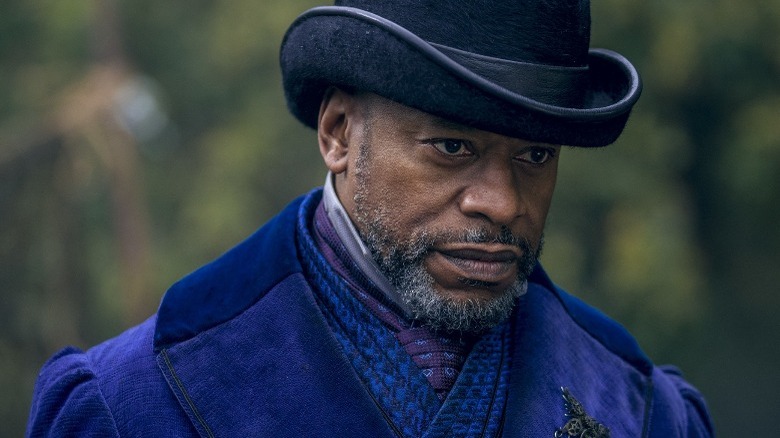
Joining the ever-growing force of grown-ups who are probably trying to keep the Hawkins kids from getting into trouble, Sherman Augustus plays Lt. Colonel Sullivan in the new season. The trailer shows glimpses of possible military involvement in its epic new plot, with a helicopter seeming to land in the backyard of one of the kids' homes. Augustus' casting announcement calls his character an "intelligent, no-nonsense man who believes he knows how to stop the evil in Hawkins once and for all."
You might know Augustus from AMC's post-apocalyptic martial arts show "Into the Badlands," where he plays a warrior named Nathaniel Moon. The actor also appears as Marshall Pruitt in season one of "Westworld," where he shows up during a tense standoff in the Western-themed park. The actor has also appeared in recurring roles in "Low Winter Sun," "American Odyssey," and even the long-running soap opera "The Young and the Restless."
Amybeth McNulty As Vickie
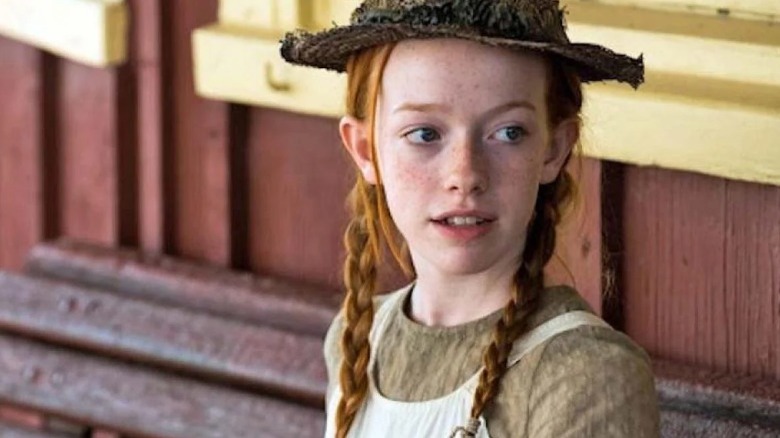
Amybeth McNulty will play band geek Vickie in the new season of "Stranger Things." Vickie is described as a potential love interest for one of the show's heroes, and while details surrounding her character pretty much end there, the actress already seems like a perfect fit for the series.
McNulty is making the jump from one beloved Netflix property to another: she starred as country girl Anne in "Anne with an E," the streamers much-loved adaptation of Lucy Maud Montgomery's "Anne of Green Gables." Though the show ended after three seasons, it gained a steadfast fan base that will surely follow McNulty to "Stranger Things." The actor has also appeared in the kidnapping drama series "Clean Break."
Myles Truitt As Patrick
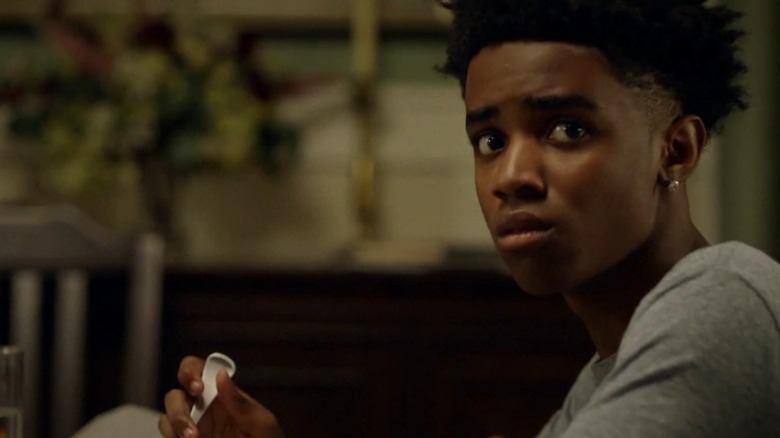
Myles Truitt will play Patrick in the fourth installment of "Stranger Things." The character is a basketball star playing on the Hawkins High team alongside Lucas (Caleb McLaughlin), who we see in the team's green jersey in trailer footage. Patrick's bio reads like a true crime show teaser: when Truitt's casting was announced, the official Netflix Twitter described the character as having "friends, talent, and a good life...until shocking events send his life spiraling out of control."
You may have caught Truitt in the second season of "Black Lightning," where the actor plays a teen named Issa who comes back to life after becoming the victim of fatal police violence. Additionally, Truitt played Ant in Ava DuVernay's drama series "Queen Sugar." His big break, though, came in the 2018 sci-fi movie "Kin," where Truitt starred as a teen who discovers a mysterious weapon along with his brother, Jimmy (Jack Reynor).
Tom Wlaschiha As Dmitri
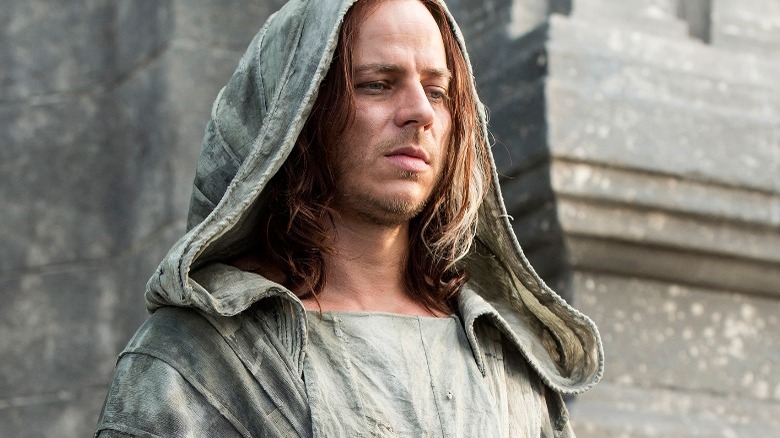
The very first footage from "Stranger Things" season four teased Hopper's imprisonment in Russia, and the last two new cast members both relate to his seemingly isolated plotline. Tom Wlaschiha plays Dmitri, a clever prison guard who could be charming–or maybe just cunning. It's unclear as of yet where the character's allegiances lie.
Wlaschiha is among the most recognizable of the new cast members, having embodied the trickster figure Jaqen H'ghar across four seasons of "Game of Thrones." Jaqen first appears as an enigmatic, face-changing assassin early in Arya Stark's (Maisie Williams) journey, then he (or someone with his face) subjects her to a merciless training regimen in Braavos a few seasons later. The German actor has also appeared in Prime Video's "Jack Ryan," period pieces like "Mr. Turner" and "Brideshead Revisited," and more.
Nikola Djuricko As Yuri
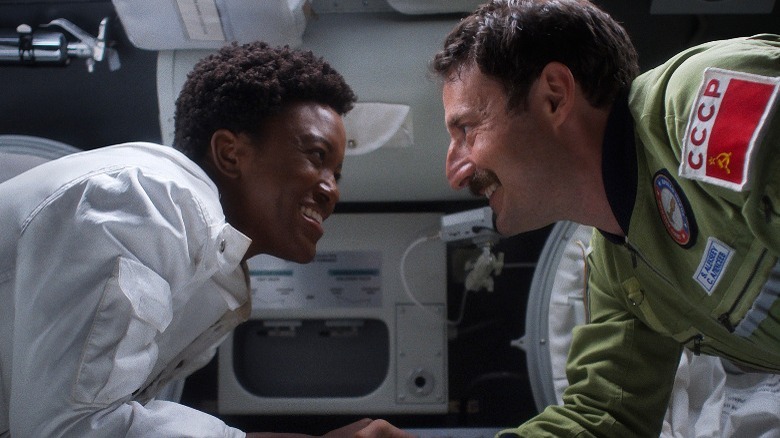
Nikola Djuricko plays another Russian character in the new season, a smuggler named Yuri. Yuri sounds pretty shady, but he also love corny jokes and peanut butter, so he can't be all bad, right?
Djuricko has popped up in plenty of projects over the years, most recently playing USSR astronaut Stepan Petrovich Alexseev in the Apple TV+ alternate history series "For All Mankind." The Serbian actor has had roles in many non-English language projects, and his credits also include the TNT series "Legends" and Sundance TV's "The Last Panthers."
Additionally, though the initial "Stranger Things" season four asting announcements did not reveal details about their characters, actors Elodie Grace Orkin ("Stage Fright"), Logan Riley Bruner ("Unbreakable Kimmy Schmidt"), and Logan Allen ("Sweet Magnolia") will also be joining the cast this year.
Read this next: 14 Anime Shows To Watch If You Love My Hero Academia
The post Where You've Seen Every New Cast Member in Stranger Things Season 4 appeared first on /Film.
Mark Hamill Wouldn't Even Tell Carrie Fisher About Star Wars' Biggest Twist
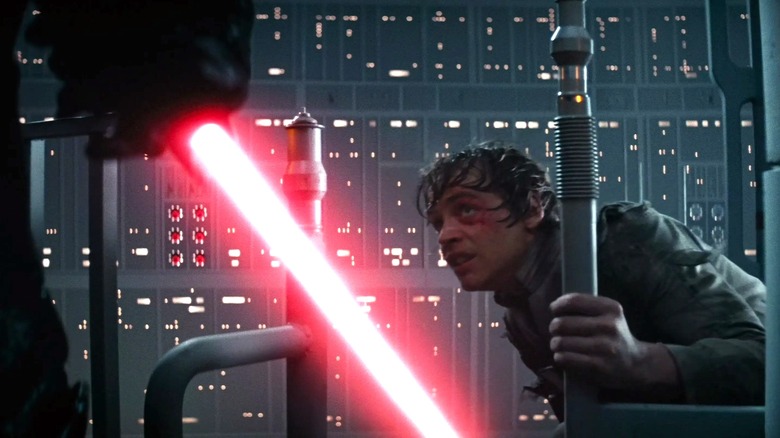
Spoiler alert! In the "Star Wars" franchise, Darth Vader is Luke Skywalker's father. Shocking, isn't it? The secret has been out there for over 42 years now, ever since "The Empire Strikes Back" made its way into theaters on May 21, 1980. But imagine you're Mark Hamill, the actor playing Luke, and director Irvin Kershner and "Star Wars" creator George Lucas have entrusted you alone with the secret.
That's the situation Hamill found himself in while "The Empire Strikes Back" was in production and he was getting ready to film the scene in the cloud city of Bespin, where Luke would lose a hand and the reveal would come. Even David Prowse, the actor who physically embodied Vader on set, wasn't privy to the secret, though back in 1978, before the script for "Empire" was ever written, he had made a remarkably accurate guess about what would happen in the story.
While promoting "Star Wars: The Last Jedi" on "The Graham Norton Show" in 2017 (video below), Hamill discussed what it was like to sit on the Vader-is-Luke's-father reveal while even Harrison Ford and Carrie Fisher, his co-leads in "The Empire Strikes Back," were left in the dark. The actor spoke first about passing the script of the original "Star Wars" movie, retroactively labeled "A New Hope," around freely because no one cared back then and it just seemed goofy. The blockbuster success of "Star Wars" changed everything. Hamill said:
"By the second film, that's when their scrutiny became more intense. And there was a wonderful substitute revelation in that scene. And the way we filmed it, Vader said, 'You don't know the truth. Obi-Wan killed your father.' And the idea of Alec Guinness being the real villain, I thought, wow, what a spectacular twist."
'Telephone, Telegraph, Tell Carrie'
Hamill further recounted to Graham Norton how it all went down when he first learned about Vader being Luke's father. He said:
"Irvin Kershner, took me aside, He came to my dressing room, actually, and he said, 'I'm going to tell you something.' I know it, George Lucas knows it, and when I tell you, you'll know it, but if it leaks, we'll know it was you.' So I said, 'What, what?' And he handed me the piece of paper that said, 'I am your father.' I [was] just shocked. I said, 'Is that true?' He said, 'Well, you search your feelings, we're going to play it like that.' So, oh my gosh, Dad Vader! And then I was paranoid 'cause I thought, you know, it was way before social media and all of that. But I had to keep the secret for about a year and a half. I didn't tell Carrie. Telephone, telegraph, tell Carrie. She had no vault whatsoever."
Hamill added that at the screening for "The Empire Strikes Back," when the reveal came, Ford turned to him and said, "Hey, kid. You didn't f****** tell me that."
In the 21st century, as the internet has made it easier to proliferate spoilers, filmmakers and studios have often gone to great lengths to conceal the secrets of hotly anticipated movies. Director Christopher Nolan, for instance, has gone so far as to lock actors in a room and not let them leave with their own copy of the script. It would certainly be much harder in today's climate for a film like "The Empire Strikes Back" to guard its secrets on the way to the big screen, but Hamill at least did his part in preserving one of the greatest movie twists of all time.
Read this next: The 12 Best Boba Fett Moments In Star Wars Shows And Movies
The post Mark Hamill Wouldn't Even Tell Carrie Fisher About Star Wars' Biggest Twist appeared first on /Film.
Karl Urban Had Jack Quaid Afraid For His Life Behind The Scenes Of The Boys
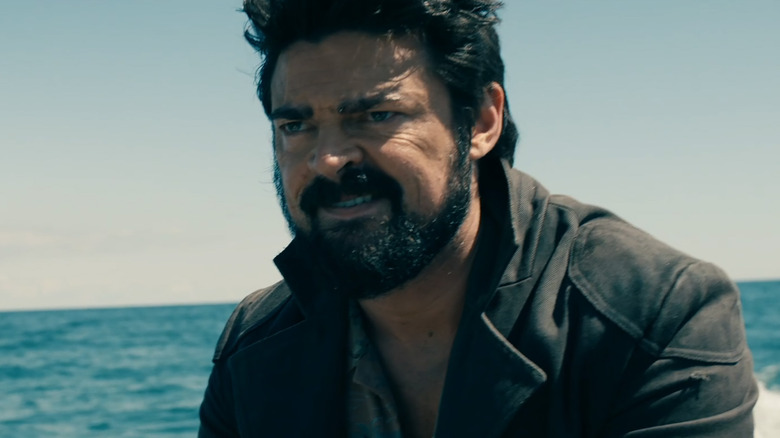
Working with Karl Urban sounds like it can be kind of an adventure, though maybe not the kind that "The Boys" co-star Jack Quaid wanted to go on. In an interview with Entertainment Tonight along with fellow "The Boys" co-star Laz Alonso, Urban revealed that shooting one sequence on season 2 absolutely terrified Quaid, though when you find out why it's kind of hard to blame him.
For one sequence in season 2, The Boys end up on a speedboat, zooming away from The Deep (Chase Crawford) and some killer sharks before crashing into a beached whale. In order to film the scene, the cast were actually in a speedboat helmed by Urban, with a helicopter flying overhead. It turns out that Quaid was a little shaken by Urban's driving, though at least he didn't actually send anyone through a whale.
A Whale Of A Time
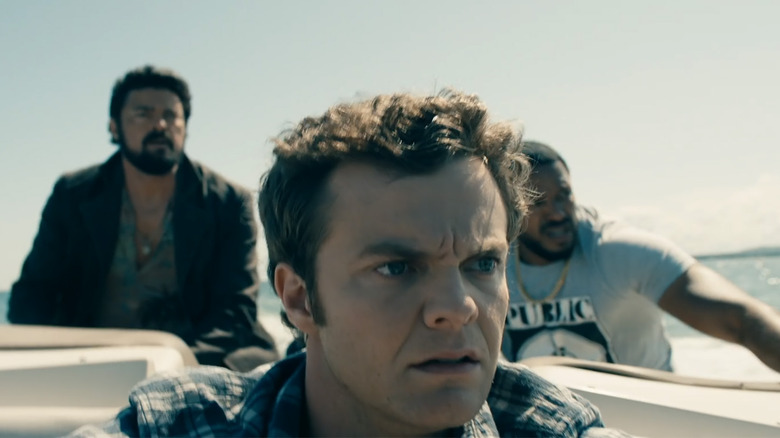
Apparently, Urban is a big fan of fishing and other outdoor activities, and is a pretty talented boat driver. Instead of trying to film a professional driver on the boat and shooting around him or inserting Urban later, the production just let Urban drive, and he had no problem launching the vehicle across the water. The problem was that Quaid, the Hollywood-raised son of Meg Ryan and Dennis Quaid, hadn't really ever been on a speedboat before:
"This season has given Jack Quaid a lifelong fear of boats. [Showrunner] Eric Kripke put him in a speedboat that I was driving, and let me tell you, we were going fast, we were jumping waves and, you know, Jack's raised in Hollywood - I don't know if he'd ever been on the water before, let alone a boat that's airborne. You know, he had a safety word that he had to scream out if he ever felt unsafe - and it was Karl - and apparently he was, like - I was, you know, driving along and we're jumping waves, and he was going, 'Karl! Karl! Karl!'"
Using Urban's name as the safe word seems a little silly, but picturing Quaid screaming it repeatedly as they hop across the waves is pretty funny. It turns out that Urban had no idea that poor Quaid was terrified, however, and didn't realize until they had stopped the boat.
Quittin' Time For Quaid
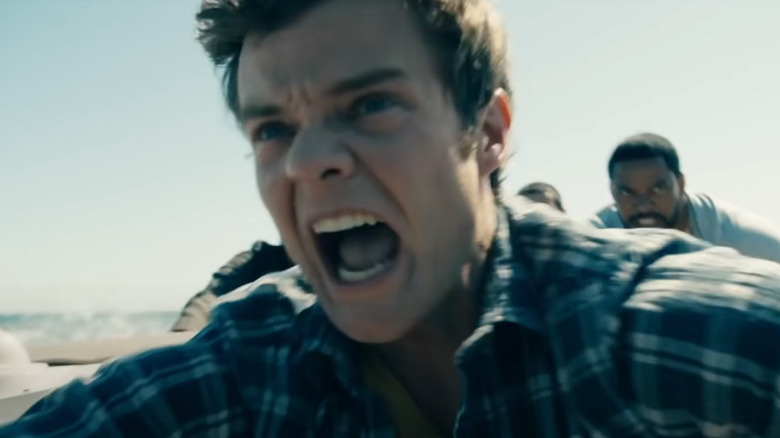
In the scene, Quaid is on the very front of the boat. That's a pretty scary place to be even if you're used to speedboats, so it's not really a surprise he didn't feel like Leonardo DiCaprio in "Titanic" but more like Zoë Bell in "Death Proof." Since he was on the front of the boat, Urban couldn't see his face, and he couldn't hear Quaid's frightened screams of "Karl!", either:
" ...I couldn't see his face because he's facing forward, and I couldn't hear him because there was a helicopter shooting us, and the sound of the engine, but I remember at the end of one run looking over at Laz and he was fine, then look over at Jack and he is white as a sheet. And I thought he was just seasick or something, but no, he's actually in mortal fear of his very life. And so he's like, 'I'm tapping out okay, you guys go ahead, you guys go ahead I'm good.'"
Thankfully the crew got plenty of footage of Quaid on the boat, and he looks appropriately terrified about the whole thing. He's not actually going to crash into a sperm whale, but maybe riding at the front of a boat helmed by Judge Dredd is just as scary. Hopefully there aren't any boats in Quaid's future on season 3 of "The Boys," which premieres June 3, 2022 on Prime Video.
Read this next: 15 Must-See Horror Anime Movies
The post Karl Urban Had Jack Quaid Afraid For His Life Behind The Scenes Of The Boys appeared first on /Film.
The First Choice For The Twilight Zone's Narrator Was A Titan Of Hollywood History
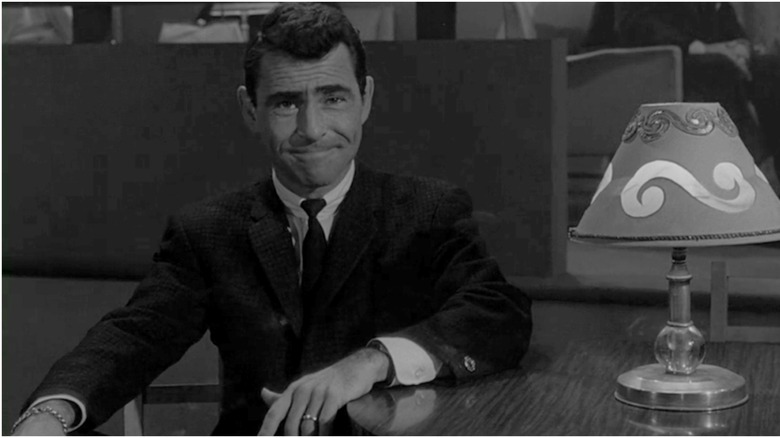
Rod Serling was one of the first famous television writers. "The Twilight Zone" is foundational to its medium, and it was a predecessor for "Star Trek" in using science-fiction stories as allegories for issues facing mid-20th century America. The series' creator and head writer (he has credits on 92 out of 156 episodes), Serling was also the presenter of "The Twilight Zone." He narrated each episode, sometimes appearing in person but always opening the show and offering a summation of the story's theme at the end. In each closing, he was sure to drop the series' title in somewhere.
This role in front of the camera is the reason for Serling's fame; it made him the face of "The Twilight Zone," especially since as an anthology, the series had no regular stars. However, when the series was being developed, there was talk of bringing in an established actor to narrate the series: Orson Welles.
Alternate Narrators
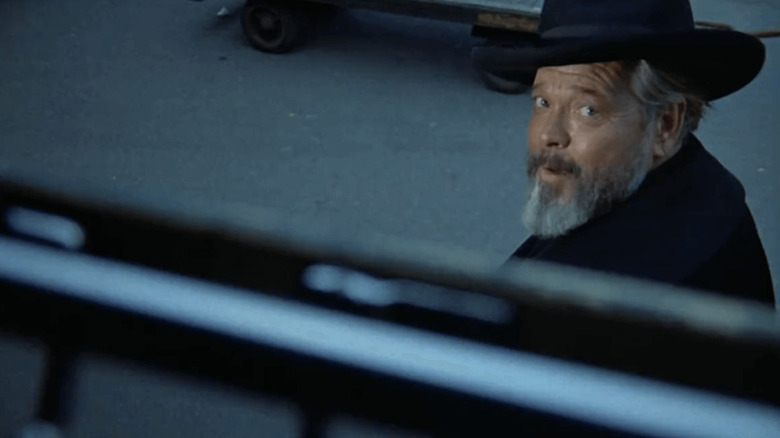
According to a 1989 Chicago Tribune piece titled "Rod Serling: Destroyed by Fame," Orson Welles had been the first pick to play the narrator of "The Twilight Zone." When "The Twilight Zone" premiered on CBS in 1959, the network had been running "Alfred Hitchcock Presents" for four years. It's plausible that the network's interest in Welles was rooted in them trying to replicate that series, another anthology show presented by a Hollywood legend. So why wasn't Welles chosen? Simple: Casting him would've been too expensive.
Welles wasn't the only narrator considered for "The Twilight Zone." The series' pilot, "Where Is Everybody?," originally featured an opening narration performed by Westbrook Van Voorhis. Van Voorhis was nowhere near Welles' caliber, but he had built a career as a professional narrator; he was especially well known for the "March of Time" newsreels, run from 1931 to 1945. Why was Van Voorhis replaced? According to behind-the-scenes content on a 1987 home media release of "The Twilight Zone," the producers thought he sounded too pompous.
With their first two choices having fallen through, Serling offered to narrate the series himself. Doing so saved the network the headache of further contract negotiations and gave "The Twilight Zone" just the narrator it needed.
Lost Opportunities
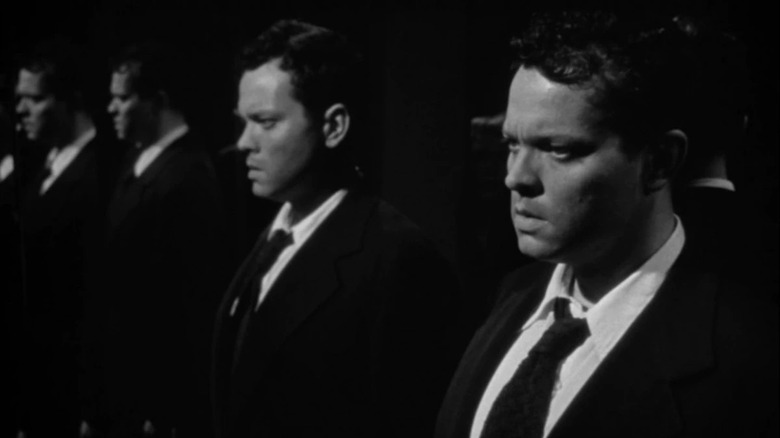
Listening to Orson Welles speak, it's easy to see why CBS wanted him as the narrator for "The Twilight Zone." His Midwest baritone may be easily parodied, but its power is inimitable (unless you're Maurice LaMarche). Welles had begun his career in radio, where a powerful voice is a necessity. In the final film of his released in his lifetime, "F for Fake," he plays a role similar to the one Rod Serling does in "The Twilight Zone" — a sardonic, omniscient narrator. His last role, Unicron in "The Transformers: The Movie," was purely a voice role.
In another case of "what could have been" Hollywood history, George Lucas considered Welles for the voice of Darth Vader. In the end, though, he went with James Earl Jones because his voice was less recognizable; Lucas wanted audiences to hear Darth Vader, not Orson Welles, when the character spoke.
Just like Jones was perfect for the Dark Lord of the Sith, Serling was the right pick to narrate "The Twilight Zone." His cool and laid-back but earnest delivery was perfect for the series' Kafkaesque humor. As magnificent a voice as Welles had, his performance likely would've drawn more attention to itself. This may have worked for the opening narrations, but it would've been quite out of place for the ending commiserations.
As for Westbrook Van Voorhis, you can be the judge, but when I listen to his narration I find myself agreeing with the CBS executives who vetoed his involvement. He does indeed sound pompous, and rather generic, too. Van Voorhis' narration can't hold a candle to Serling's sly delivery.
Read this next: The 15 Best Anthology TV Series Ranked
The post The First Choice For The Twilight Zone's Narrator Was a Titan of Hollywood History appeared first on /Film.
Hey, remember that one about the bold, plucky band of Libertarians who founded their own island nation and then got conquered by the King of Tonga leading a small army of prisoners and a brass band? Good times, good times [Fail]
2-Year-Old Orders 31 Cheeseburgers on Mother’s iPhone, Another Reason Why You Should Secure Your Phone

A mother received 31 cheeseburgers from McDonald's after her two-year-old son got hold of her iPhone. While you should always lock your phone from strangers snooping around, this is another reason why Face ID or Touch ID is a must. The tot ordered 31 cheeseburgers using the DoorDash app. Scroll down to read more details on the subject.
Mother Finds Her 2-Year-Old Kid Had Ordered 31 Cheeseburgers on Her iPhone, No Regrets
The Texan mother shared the incident on Facebook on Monday, posting an image of her son next to 31 cheeseburgers. She comically wrote, "31 free cheeseburgers from McDonald's if anyone is interested." She further added, "Apparently my 2 yr old knows how to order DoorDash." Other Facebook users also shared their stories in the comments. Kelsey Gordon received a DoorDash notification on her phone that her order was taking longer than usual. Everything came to light when a car stopped in front of her door with 31 cheeseburgers that her kid had ordered.
While it is an innocent mistake, it is always wise to keep your smartphones locked if you have children around you. Moreover, Apple has also provided users with parental controls that users can configure on their own. In this case, the scene could have been easily avoided if appropriate restrictions were placed. Moreover. the kid could have ordered something worth far more than cheeseburgers. The mother had to pay $91.70 which includes the 25 percent tip for the 31 cheeseburgers.

Other than this, parents can also set up purchases through Apple Pay that requires Face ID before every purchase. When these configurations are set in place, it will prevent how kids can make such mistakes. Nonetheless, the mother's post on Facebook went viral and the 2-year-old was invited by McDonald's to meet the company mascot.
This is all there is to it, folks. Share your experience with us in the comments section below.
The post 2-Year-Old Orders 31 Cheeseburgers on Mother’s iPhone, Another Reason Why You Should Secure Your Phone by Ali Salman appeared first on Wccftech.
Thieves take $23,000 in merchandise from Normal Walmart. Bizarro Walmart unscathed [Asinine]
This Top Gun: Maverick Moment Was An Out Of Body Experience For Glen Powell
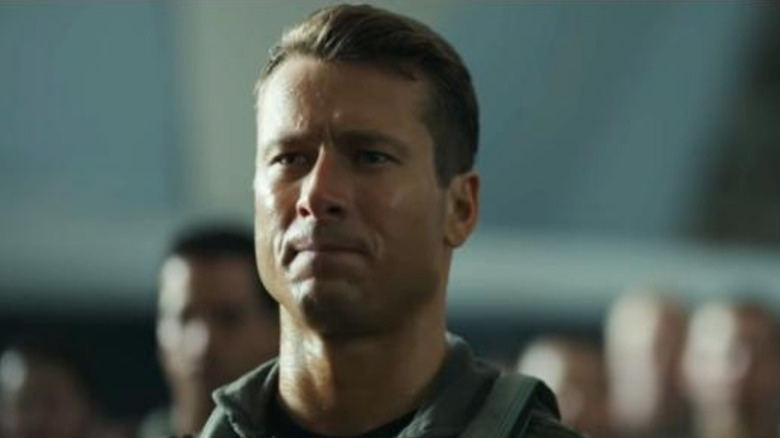
"Top Gun: Maverick" is poised to be one of the year's biggest movies, and not just because of its real-life airplane stunts or IMAX cameras. The legacy sequel to 1986's "Top Gun" has an ensemble cast playing aspiring elite fighters, spearheaded by the titular Pete "Maverick" Mitchell (Tom Cruise).
Among the students Mitchell will be training throughout the movie is Jake "Hangman" Seresin, played by "Hidden Figures" actor Glen Powell. Despite his lengthy resume, he currently isn't a household name, although that could change upon the release of "Maverick." After all, he and many of his co-stars underwent rigorous pilot training to do the death-defying stunts in real life. I mean, not many actors can say the same.
However, the most surreal moment of Powell's time on the set, surprisingly, was not any of the stunts. In an interview with DuJour, he explained that meeting one of his idols was a real out-of-body experience.
The Best Pilot In The Navy
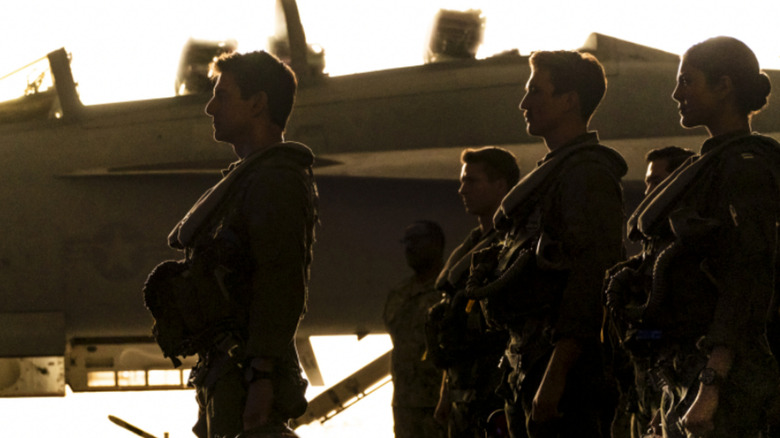
Hangman gives himself that call sign in the movie, and that might be put to the test when he's training with Mitchell. However, the actor channeled his character's confidence while filming, thanks to his and the cast's intense equipment during training.
"We had to learn how to fly F-18 airplanes," he explained. "I was doing so much prep on this film, so when Day 1 came, Hangman was ready to go."
While anyone else might find the prospect of flying just like a Navy Fighter anxiety-inducing, Powell made it sound like a cake-walk. However, standing next to Tom Cruise in a scene seemed to be an entirely different feeling altogether for the actor. He explained:
"There is a moment when you're on set standing next to Tom Cruise next to a F-18 jet wearing aviators where you think, 'this is as good as it gets.' It was such an out-of-body experience."
Flying High
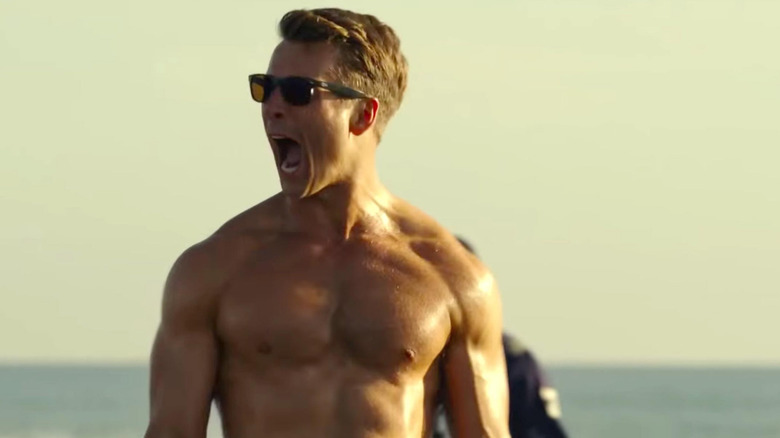
Sure, everyone would probably be star-struck if they saw Cruise in public. However, the feeling was more important to Powell than one might expect. He told DuJour that watching "Top Gun" with his father was among his favorite childhood memories, comparing it to playing a game of catch. He also attributes the original movie to his current career path.
"Tom Cruise is one of the reasons I wanted to get into acting," Powell said. "So many pilots became pilots because of 'Top Gun,' and so many actors became actors because of Tom Cruise in this film."
One of the best things about movies is their effects on people, and it's endearing to read Powell opening up about the effect "Top Gun" had on his life. It is true that the movie has made a significant impact on popular culture and how the general public views the Navy Fighters Weapons School. In my humble opinion, more actors should open up about getting nervous or even having out-of-body experiences working with icons of the screen, as these stories are always interesting. And endearing.
Audiences will not have to wait long to see Powell operate an F-18 airplane and wear cool aviators as "Top Gun: Maverick" soars into theaters on May 27, 2022.
Read this next: The 14 Greatest Action Movies Of The 21st Century
The post This Top Gun: Maverick Moment Was an Out of Body Experience For Glen Powell appeared first on /Film.
Need to return the office, but forgot how to dress yourself? Don't worry, CNN has you covered [Obvious]
Could AMD’s ‘Greater Than 15% Single-Threaded Performance’ For Ryzen 7000 CPUs Be Another Jebait Attempt?

Earlier today, AMD announced its Ryzen 7000 Desktop CPUs based on the 5nm Zen 4 architecture. The new processors deliver a rather decent 'greater than 15% performance improvement over its predecessors but many AMD fans find that to be not as impressive based on all the rumors & leaks regarding the chips. So how much fast is Ryzen 7000 expected to be & could the red team yet again jebait us with much higher performance than what's currently been demonstrated?
AMD Ryzen 7000 CPU Performance Should Not Be Considered Lackluster, Greater Than 15% Uplift Was Achieved With Pre-Production Samples
AMD showcased three performance aspects of its next-gen Ryzen 7000 Desktop CPU. We saw the clocks, we saw performance versus Intel's fastest Alder Lake CPU, we got some info regarding the single-threaded performance figures and all of these figures were from a pre-production 16-core chip. We don't have a name for this chip yet but it's going to succeed the Ryzen 9 5950X 'Zen 3' & offer higher clocks.
First of all, according to Ian Cutress of TechTechPotato, the TDP (Thermal Dissipation Power) figures for AMD Ryzen 7000 CPUs are going to be 125W while the PPT (Package Power Tracking) is going to be 170W. AMD provided this information in a reply to whether the 170W figure was an actual TDP for the upcoming chips or an upper-bound limit for the package. Despite AMD confirming during its Q/A session that the 170W figure was the PPT that the AM5 (LGA 1718 socket) can sustain, they still showed 170W as a 'TDP' figure. This might be due to miscommunication between AMD marketing & technical teams.
Moving on, the TDP figures were the most important and generally, AMD used to be very proud of showcasing them during live demos. This time, however, AMD decided to keep them hidden which is weird but since we are talking pre-production samples, AMD might have decided to keep them under wraps till the final silicon is produced. That's where the clocks come in too!

AMD showcased some insanely fast frequencies with the same Ryzen 7000 CPU sample hitting up to 5.52 GHz but we did see some variation in the clock speeds which started at 5.1 GHz and went up to the max 5.52 GHz speed which everyone is talking about. Once again, we weren't told if the chip was running at stock clocks or if some new PBO or XFR technology was pushing the chip this hard. We all remember the infamous chiller demo of Intel's Skylake-X that was used to demo its impressive frequencies for the time. Now I am not saying that AMD was using a chiller and they could've used the same ASETEK 280mm radiator that's been used throughout the pre-production chip tests but still, a word on temperatures or cooling would've been nice too.
AMD Ryzen 7000 16-Core Pre-Production Sample 'Gaming' Clocks:
These are small details that make up a bigger part. So coming to the next part, we have to talk about the Blender demo. Blender is one application where AMD has a strong foothold. AMD's Ryzen 9 5950X is about 15-20% faster in the same benchmark versus the Intel Core i9-12900K. During the demo, AMD stated that the Ryzen 7000 Desktop CPU was 31% faster than 12900K. What's not told is that in the footnotes, the difference is larger with AMD finishing the render in a total of 204 seconds while the Alder Lake CPU finishes the demo in 297 seconds. In reality, the Ryzen 7000 CPU took 31% less time or offered 45% faster performance than the competing chip.
RPL-003: Testing as of May 5, 2022, by AMD Performance Labs using pre-production silicon and performance projections for final products which are subject to change when released on market. Render time measured in seconds to complete and AMD Ryzen 7000 series processor wallpaper render. AMD Time: 204 seconds, Intel time: 297 seconds. Lower score is better. Core i9-12900K System: ASUS ROG Maximus Z690 HERO, 2x16 DDR5-6000CL30. AMD Ryzen 7000 series (pre-production 16-core): AMD Reference X670 Motherboards, 2x16GB DDR5-6400CL32. All systems configured with Radeon RX 6950 XT (driver:22.10 PRIME), Windows 11 Build 22000.593, Samsung 980 PRO 1TB, Asetek 280MM Liquid cooler. Results may vary.

The marketing team could've really used the 45% number against the Intel Core i9-12900K but it looks like AMD is still sandbagging its own CPUs for some reason unknown. Then we have the 15% performance uplift gain. This gain isn't IPC, but it's in fact a combination of both the IPC and clock speeds that gives us the greater than 15% single-threaded performance number, as Robert Hallock has stated. This means that the IPC in general isn't as big as expected and could end up being in the single-digit range (9-10%). The clocks and the rehauling of the architecture are what are going to provide the major performance uplifts.
AMD Ryzen 7000 16-Core Desktop CPU 'Blender' Performance Demo:
AMD does use the word 'Greater' here but it shouldn't be over 20% as AMD could have used that instead of the 15% claim instead to make it sound better. However, the actual number could lay between 15-19% and 19% would be the best possible scenario so expect 16-17% to be a more realistic number.
Even if 15% was a concrete number then this would be better than anything that Intel used to cook up back in the days when it was stuck with its 14nm process node but this isn't the same ground for competing anymore. Intel's offerings have been just as disruptive as AMD's starting Alder Lake and Raptor Lake is a big threat for Zen 4 now more than ever so the red team is going to be very considerate about revealing the full potential of their chips to their adversary who will also have their own next-gen chips available at the same time.

But again, this number can change and AMD has moved its performance projections up in the past too. We are talking about a Fall 2022 launch which means September at the earliest for the Ryzen 7000 CPUs. That's still 5-6 months worth of wait and lots of time for improvements & optimizations. All of these performance numbers are just claims for now and AMD can only go up from here. We are almost sure that AMD will go silent for a while now and come back a few months later with a few surprises in its pockets.
One surprise could be jebaiting the whole tech world with a far better show-case of its Ryzen 7000 Desktop CPUs than what was delivered today. We will keep our hopes up and would ask everyone to wait for the final CPUs to be announced. With that said, we would like to hear what you thought about the performance claims and clock numbers AMD showcased during its Computex 2022 keynote in the comments below!
Addition AMD Ryzen 7000 Desktop CPU Test Footnotes:
- Testing as of May 5, 2022, by AMD Performance Labs. Single-thread performance evaluated with Cinebench R23 1T. AMD Ryzen 9 5950X System: ASUS ROG Crosshair VIII Hero X570, 2x8 DDR4-3600C16. AMD Ryzen 7000 Series: AMD Reference X670 Motherboard, 16-core pre-production processor sample, 2x16GB DDR5-6000CL30. All systems configured with Radeon RX 6950XT GPU (driver: 22.10 Prime), Windows 11 Build 22000.593, Samsung 980 Pro 1TB SSD, Asetek 280MM liquid cooler. Results may vary. RPL-001
- Max boost for AMD Ryzen processors is the maximum frequency achievable by a single core on the processor running a bursty single-threaded workload. Max boost will vary based on several factors, including, but not limited to: thermal paste; system cooling; motherboard design and BIOS; the latest AMD chipset driver; and the latest OS updates. GD-150.
- AMD’s product warranty does not cover damages caused by overclocking, even when overclocking is enabled via AMD hardware and/or software. GD-26.
- Testing as of May 5, 2022, by AMD Performance Labs using pre-production silicon and performance projections for final products which are subject to change when released in market. Sequential/sustained disk throughput measured with CrystalDiskMark. AMD Ryzen 7000 Series: AMD Reference X670 Motherboard, 16-core AMD Ryzen 7000 Series pre-production sample, 2x16GB DDR5-6000CL30, PCIe® Gen 5 prototype SSD versus Phison E18+ PCIe® Gen 4 SSD, Radeon RX 6950XT (driver: 22.10 Prime), Windows 11 Build 22000.593, Asetek 280MM liquid cooler. Results may vary and/or are subject to change as the storage ecosystem develops and final products are available. RPL-002
The post Could AMD’s ‘Greater Than 15% Single-Threaded Performance’ For Ryzen 7000 CPUs Be Another Jebait Attempt? by Hassan Mujtaba appeared first on Wccftech.
Assassin’s Creed Valhalla Title Update 1.5.2 is 7GB on PC, full patch notes
Ubisoft has announced that Title Update 1.5.2 for Assassin’s Creed Valhalla will release tomorrow. This patch is 7GB in size on PC, and below you can find its complete changelog. According to the French company, Patch 1.5.2 adds the Armory building and loadout feature to the game, as well as new rewards to River Raids. … Continue reading Assassin’s Creed Valhalla Title Update 1.5.2 is 7GB on PC, full patch notes →
The post Assassin’s Creed Valhalla Title Update 1.5.2 is 7GB on PC, full patch notes appeared first on DSOGaming.
Prisoners Ending Explained: Captive To A Vicious Circle Of Victimization
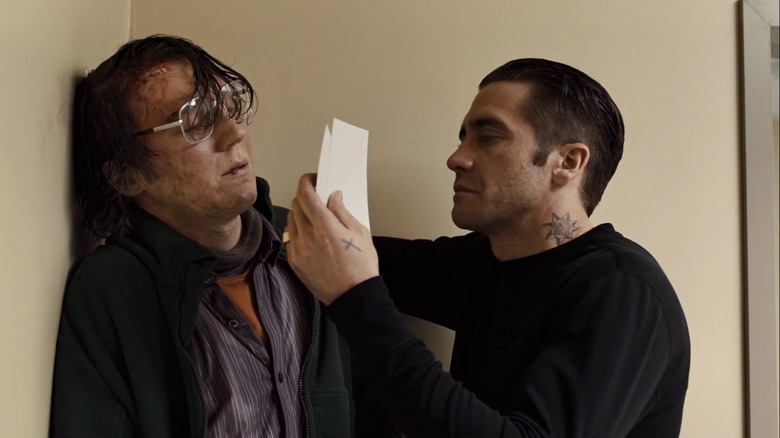
"Prisoners" marked the English-language crossover of Denis Villeneuve, the director of "Sicario" and sci-fi heir apparent to Ridley Scott (with films such as "Arrival," "Blade Runner 2049," and "Dune"). Though Villeneuve actually shot another warm-up film with Jake Gyllenhaal — the spidery doppelgänger thriller "Enemy" — before "Prisoners," its release would come after, meaning that "Prisoners" would be the first introduction to many stateside audiences for Villeneuve's work -- unless they were already versed in his earlier French-language movies like "Incendies."
Whereas "Enemy" and "Sicario" are the length of standard movies, clocking in at 90 and 121 minutes, respectively, "Prisoners" is a longer film with a 153-minute runtime. Though it's still operating in thriller mode, the thrills are more drawn out amid the dark drama of two families dealing with the abduction of their girls. "Prisoners" was Villeneuve's first collaboration with both the late composer Jóhann Jóhannsson and director of photography Roger Deakins (who earned an Academy Award nomination for his cinematography), and it saw him working with a top-shelf cast, including Hugh Jackman, Jake Gyllenhaal, Viola Davis, Maria Bello, Terrence Howard, Melissa Leo, Paul Dano, Dylan Minnette, and David Dastmalchian.
"Prisoners" ends on a note that gives resolution to plot and characters arcs but also leaves the viewer to imagine what will happen next. If you hear a whistle blowing, that indicates spoilers, as we're about to delve into those and discuss the ending of Denis Villeneuve's "Prisoners."
Patient And Penitent In Affliction
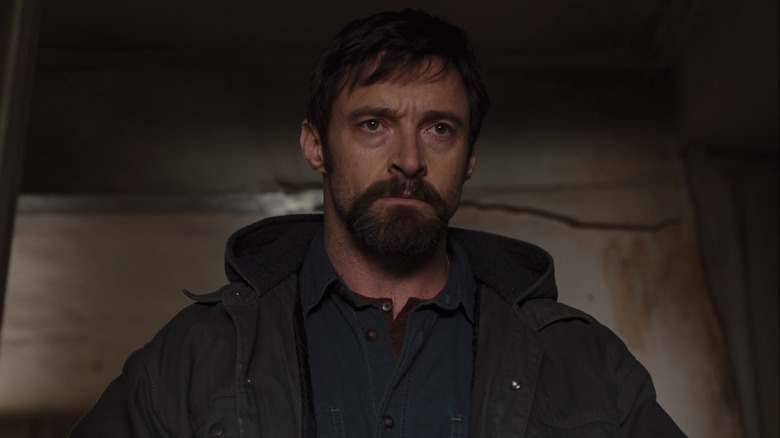
"Prisoners" begins with a hunting scene, as Jackman's character, Keller Dover, recites the Lord's Prayer and his son Ralph, played by Minnette, trains a rifle on a deer. Dover is a religious man: he wears a cross around his neck and has one hanging from the rearview mirror in his truck. He says the most important thing his own father taught him was to be ready, and we'll see later that his basement is overstocked with emergency supplies, as if he wants to be especially well-prepared for judgment day coming like the proverbial "thief in the night" of scripture.
Despite this, Kellar is not at all prepared for what happens when his daughter goes missing.
In an interview with Go into the Story, "Prisoners" screenwriter Aaron Guzikowski discussed how Kellar's outwardly God-fearing nature and the "connections to Catholic iconography and Bible stories" in the movie and his overall writing stem from his upbringing. While not a practicing Catholic, Guzikowski draped "Prisoners" in some religious trappings that inform Keller's arc and the movie's ending.
After Kellar's daughter, Anna (Erin Gerasimovich), disappears, and suspicion falls on the mentally handicapped Alex Jones (Dano's character, not the controversial real-life radio host), we see Kellar take the law into his own hands, essentially playing God in the name of being a protective parent. At one point, we hear a preacher's voice on Kellar's car stereo talk about being "patient and penitent in affliction," but Kellar is having none of that. He becomes convinced that Alex knows something about where his daughter is. He's not entirely wrong about that, but he goes to extreme lengths to extract information from a man with the mental capacity of a 10-year-old.
As We Forgive Those Who Trespass Against Us
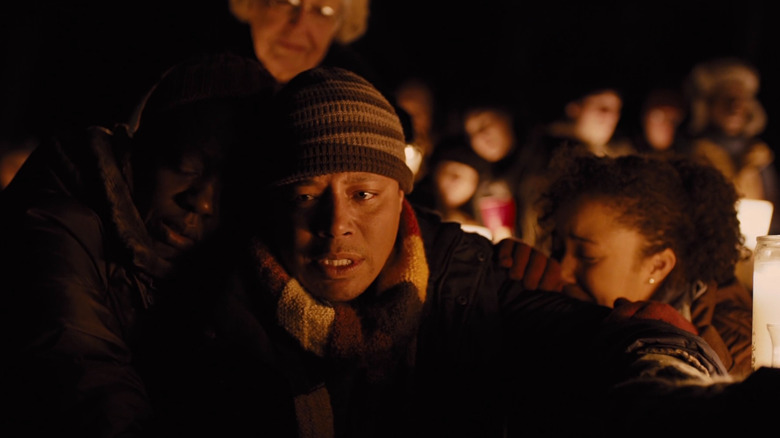
Ralph had spotted Alex's RV in the neighborhood before his sister and Kellar's daughter went missing, and the girls had been playing on it, which is what partially led Detective Loki (Gyllenhaal) and the police to arrest Alex and interrogate him. However, they could find no physical evidence of Anna having ever been in the RV.
As Alex is being let go, Kellar attacks him outside the police station. Later, after Kellar sees Alex being cruel to a dog and singing the "Batman smells" version of "Jingle Bells" (which Anna had been singing the day she disappeared), he kidnaps him and keeps him captive in his vacant house so he can conduct his own brutal interrogations.
Kellar involves the Birches, Franklin and Nancy (Howard and Davis), in his vigilantism since their daughter, Anna's playmate, Joy (Kyla-Drew Simmons) has also gone missing with Anna. Outside the police station, Kellar heard Alex say, "They didn't cry until I left them," thus implying that Alex knows something about where the girls are.
Franklin confronts Kellar with the question, "What if you're wrong? What if you only heard what you wanted to hear?" But Alex has his own justifications for the violence and torture he inflicts on Alex. His rationale, which he explains to Franklin, is, "He's not a person anymore. He stopped being a person when he took our daughters." Dehumanizing his prisoner goes against his own religion, however, and as he recites the Lord's Prayer again later in the movie, it's no longer so comfortable for Kellar to speak the "as we forgive those who trespass against us" part.
Snakes Unlocked
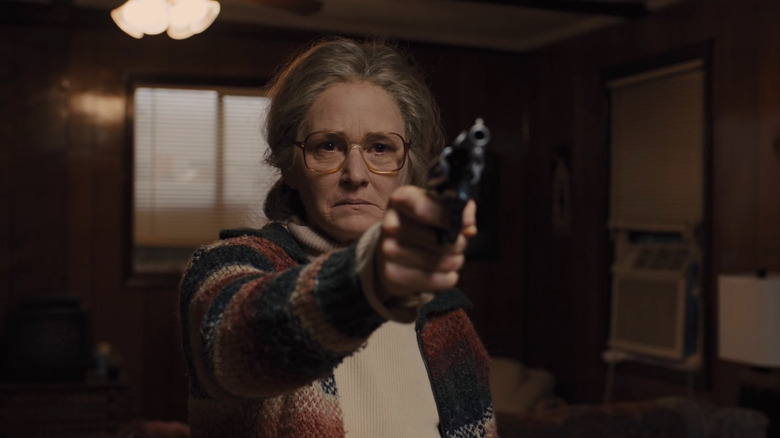
In "Prisoners," Leo's character, Holly Jones, is supposed to be Alex's aunt. She says his parents died in a car accident, and her own husband walked out on her one day and never came back. However, when Loki is investigating another suspect, Father Dunn (Len Cariou), he finds a corpse in the cellar, and this corpse belongs to a man with a maze necklace that matches the one Holly's husband is wearing in an old photo.
This also connects the man to Bob Taylor (Dastmalchian), another suspect whose house holds many map drawings and locked containers full of live snakes and bloody children's clothes. Dunn told Loki that the dead man, Mr. Jones, was waging a war against God, and we eventually learn that he and Holly were doing it together after their son died of cancer.
When Kellar goes to confront Holly at her house, she tells him that she and her husband used to spend their summers driving around in a camper, "handing out pamphlets, spreading the good word." The loss of their son turned them against God, and they started making children disappear to make people "lose their faith" and "turn them into demons" like Kellar.
Alex, as it turns out, is the very first child that Holly and her husband abducted, all grown up now. He himself is a victim who had his emotional growth stunted by trauma at an early age. Bob was their second victim, and it left him similarly troubled, to the point where he winds up shooting himself after getting his hands on an officer's gun while in police custody.
Doing The Lord's Work
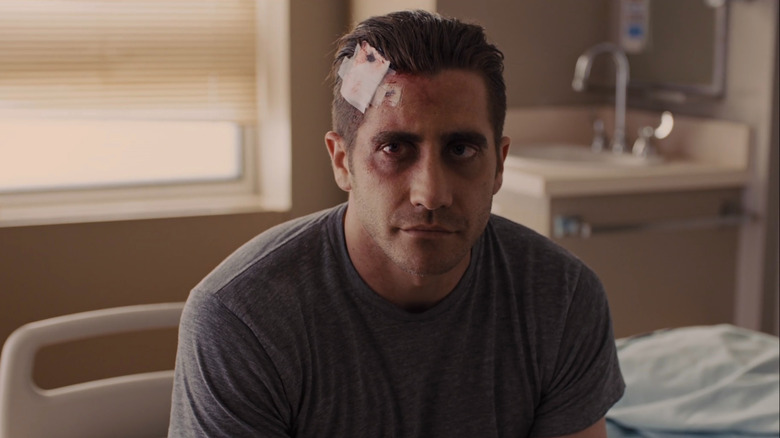
In his zeal to find his daughter, Kellar unwittingly continued the cycle of abuse, hurting someone who "never laid a hand on his daughter." "Prisoners" almost seems to be headed for an ending like "The Vanishing" at first, as Holly holds Kellar at gunpoint, telling him to imbibe a drug if he wants to see his daughter again. In the end, it's Loki who saves the girls, while Kellar is left trapped below ground under a car in Holly's yard.
Though Loki's name links him to a mythological trickster of Norse mythology (namesake of the well-known Marvel character), that in and of itself may be a red herring. Loki, not Kellar, is the real hero of "Prisoners."
When we first meet Loki, he's eating alone in a Chinese restaurant on Thanksgiving. He has a nervous tic that causes him to blink a certain way, and when he's questioning Father Dunn, a registered sex offender, he reveals that he spent time at Huntington Boys Home, a place implied to have its own abusive history.
Loki has overcome the victimization loop to become one of the good guys. Rather than visiting the wrongs that were done to him on other people, he's doing the actual Lord's work, trying to help others. At the end, Alex is reunited with his family after 26 years, and Kellar is left calling for help, blowing the missing whistle that Anna and Joy went off to find in the first place. That whistle set in motion the plot of "Prisoners," so it's fitting that it brings the movie to a close. And though we don't see it, we can imagine that the sound of it will help Loki unearth Kellar after the film has faded to black.
Read this next: Every Sam Raimi Film Ranked
The post Prisoners Ending Explained: Captive to a Vicious Circle of Victimization appeared first on /Film.


